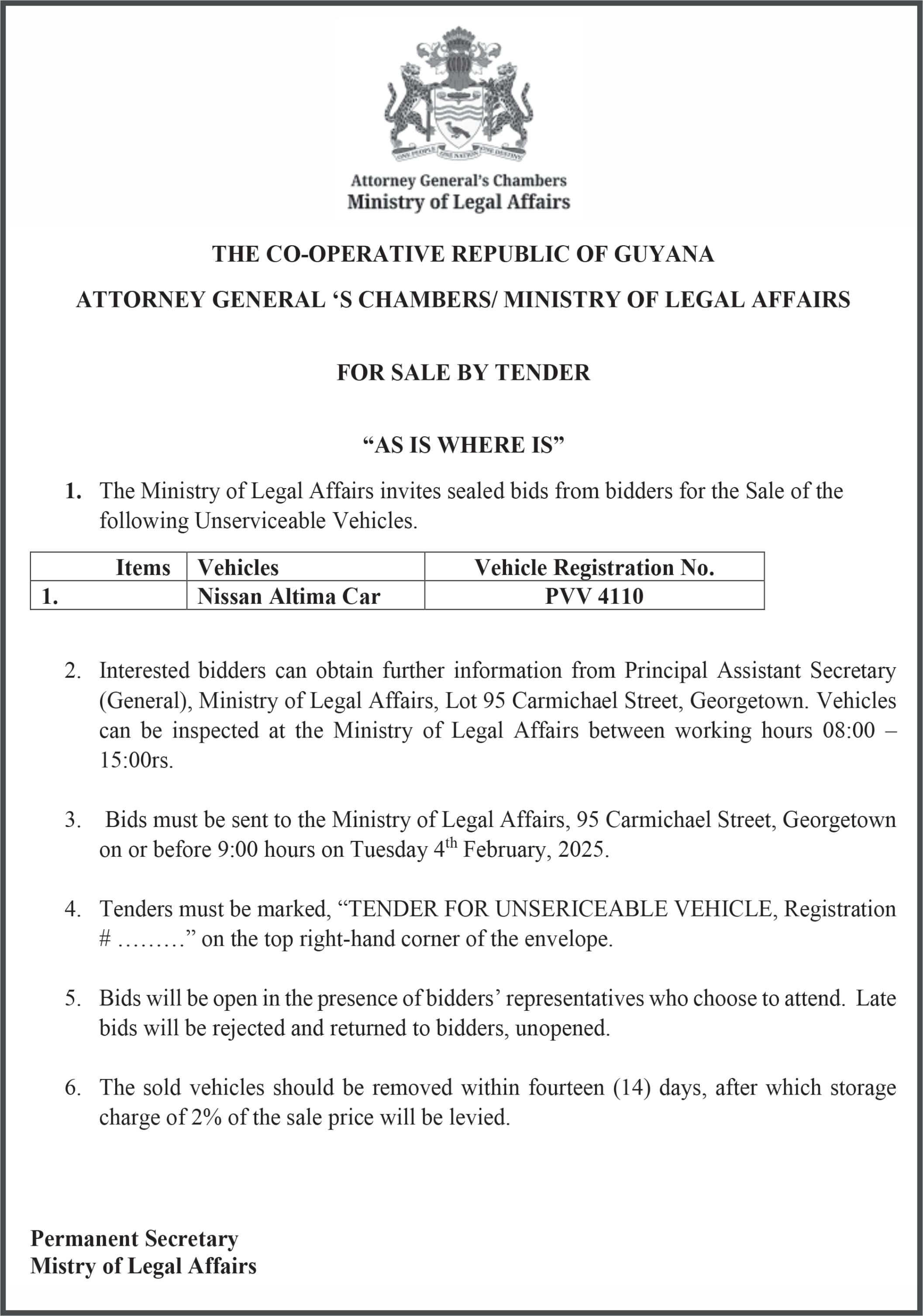Rediscovering Chinatown
Local writer reviving the voice of Guyana’s Chinese ancestors
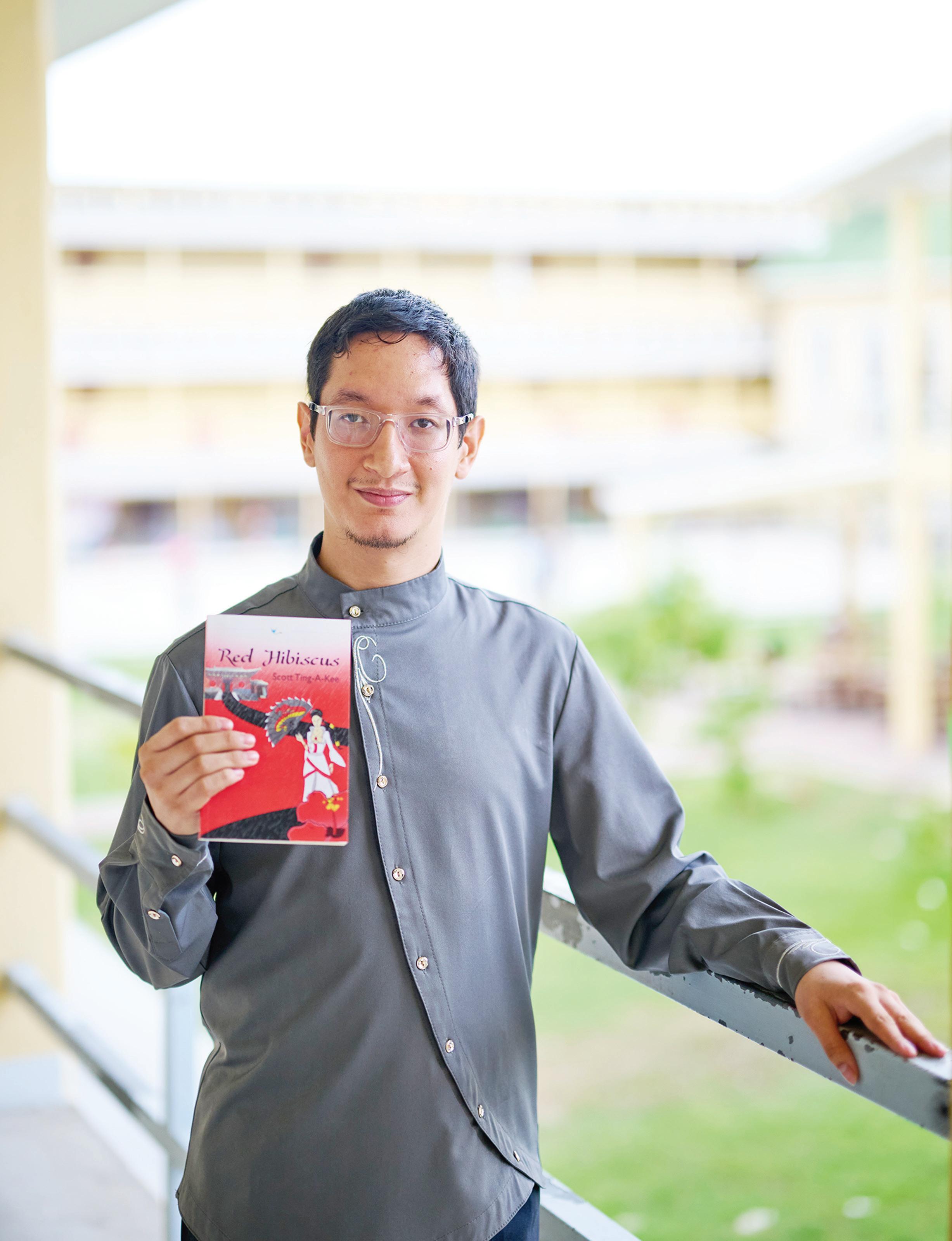
Scott Ting-A-Kee is a novelist and English teacher with a love for history (Samuel Maughn photo)

Sunday, February 2, 2025


Scott Ting-A-Kee is a novelist and English teacher with a love for history (Samuel Maughn photo)

Sunday, February 2, 2025
By Michel Outridge
WHEN Melissa Wilson relocated to Georgetown from Linden, Region 10, it was with one sole purpose in mind: to make use of all opportunities to make herself marketable and to establish her own businesses in fashion and as an entrepreneur.
she had a unique style for fashion and liked to handstitch pieces of fabric to make cute outfits for herself.
She was able to take a bland skirt and transform it into her very own style, and as she matured into adulthood, that passion grew even more.
Wilson decided to take

Linden. However, a year ago, she moved to the city to pursue her goals of tertiary education and to establish her small business.
Wilson shared with the Pepperpot Magazine her journey of becoming a seamstress and her brand of tote bags, some of which are hand-painted and outfitted with bows—Totes and Things.
The entrepreneur reported that her passion is to become a fashion designer, and she has been a part-time student at the Burrowes School of Art for the past year.
She stated that things began to come together in 2019 when she acquired an electric sewing machine. She started practising by putting together outfits for herself.
Once she improved her skills, she began taking in sewing jobs for customers, and it has since become a side hustle, operating from within the confines of her home in the city.
Wilson, a mild-mannered person who loves everything about fashion, pointed out that she was elated when she got an electric sewing machine, finally putting an end to her hand-stitching days.
Totes and Things
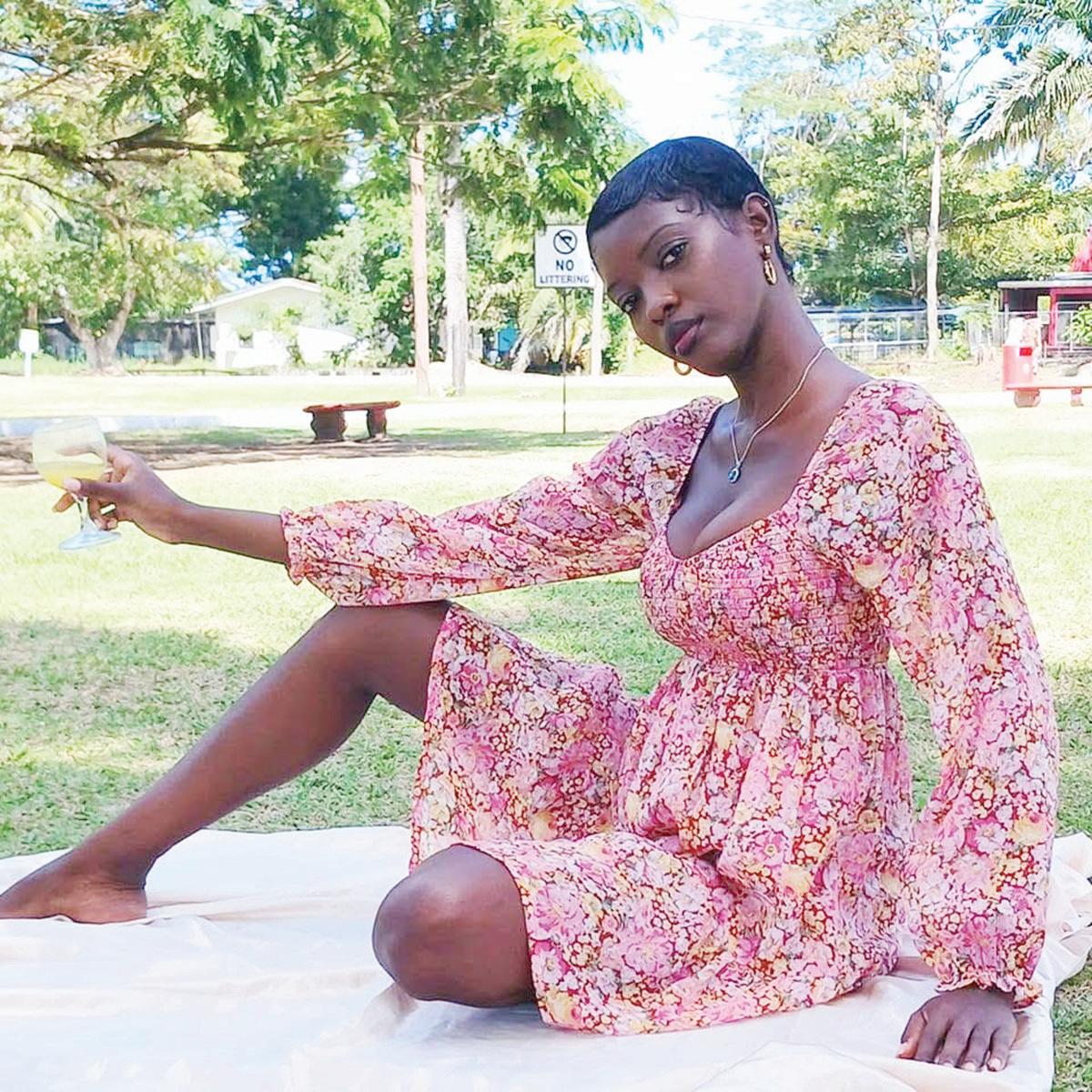
The 26-year-old related that ever since she was a girl, she always toyed with scissors. She would take apart pieces of her own clothing and fix them to her liking. At that time, she knew
basic sewing classes in Linden for three months, and with the knowledge garnered, she managed to enhance her sewing skills.
She is originally from Paradise Village, Berbice, but relocated to live with her mother in Amelia’s Ward,
Meanwhile, during her classes at the Burrowes School of Art, one day, a classmate showed up with a tote bag. Wilson was impressed and enquired where she had gotten it.
She then expressed her desire to be able to make them from scratch, and her lecturer, who was present, volunteered to demonstrate how the pattern could be made.
From then on, Wilson had a lot of practice before mastering the art of cutting patterns and sewing the pieces together to make the ideal tote.
Her skills were further enhanced when fabric painting was introduced in the class, and she became familiar with mixing different shades of paint to achieve the right colours.
Wilson decided to handpaint totes, and she was pleased with the outcome. The bags began selling like
‘hot cakes’, and thus, her small business, Totes and Things, was birthed five years ago.
She related that she came up with the name Totes and Things because she plans to incorporate other items, such as aprons and makeup bags, into the brand.
Wilson added that the hand-painted totes and those with bows cost $3,000 each, while the plain totes are $2,000 each and can be delivered for a fee of $500.
The businesswoman stat-
ed that some customers have requested zips on the totes for added security when carrying valuables, especially in the city.
“I will soon have a pickup location at City Mall, located on Regent and Camp Streets, Georgetown, third floor at Capture Studio, for customers,” she said.
The small business owner told Pepperpot Magazine that while growing up, one thing was certain—she had a passion for clothes, makeup,
TURN TO PAG IX

After losing the use of his legs, one father is rebuilding his life - one haircut at a time
By Shaniya Harding
FROM a life-altering accident to overcoming obstacles with the support of family, community, and an unbreakable spirit, Jefferson ‘Jeff’ Thompson is proving
changed dramatically almost ten years ago when an accident not only robbed him of his mobility but also tested his mental and emotional strength. Despite the hardships, his journey is one of hope and determination, backed
lage of Paruima and later moving to the fastpaced life of Venezuela, Jeff was known for his infectious jovial demeanour and profound love for life. However, his world was turned upside down when a mining accident left him
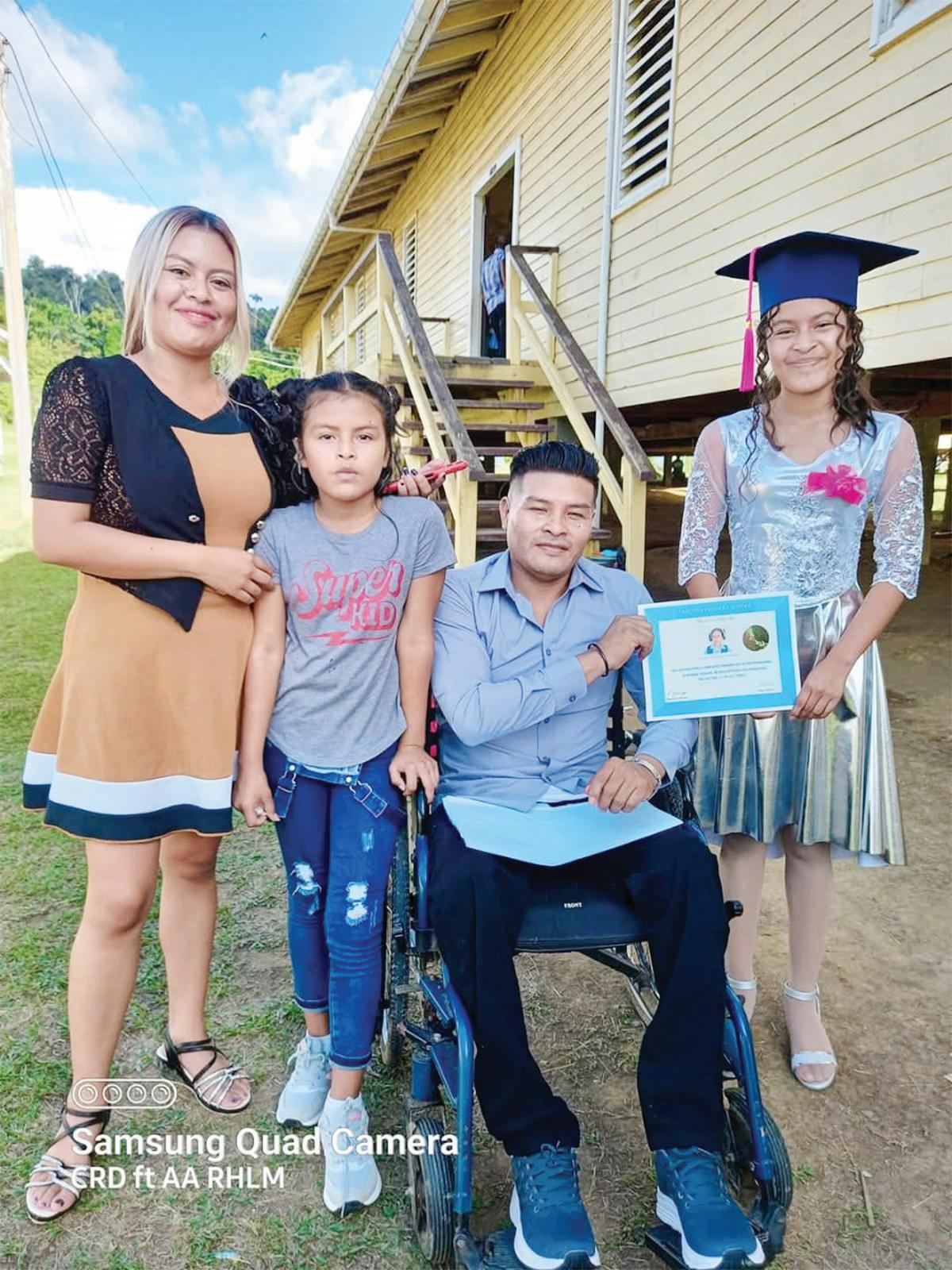
that great loss does not mean giving up on one’s passion.
In the vast hills of Paruima Village, Region Seven, the 38-year-old father is rewriting his story, showing resilience in the face of adversity. Jeff’s life
by unwavering support from his loved ones. With their help, he has been able to pursue his passion for barbering while rebuilding his life with a renewed sense of purpose.
The accident: learning to live again Born in the rural vil-
buried underground for an extended period. By the time rescuers pulled him out, he had lost all mobility in his legs. At the time, Jeff was focused on building a better future for his family. He had moved to Venezuela as a teenager in search of bet -
ter opportunities and had made significant strides towards establishing a home. Recalling the dark days following the accident, Jeff shared, “After the accident, I felt very sad. It was hard because my whole life changed— from normal to this. It broke my heart to know I could not do what I was supposed to—work for my children.”
As devastating as the accident was, Jeff admitted he was unprepared for the challenges that came with recovery.
Coming back home: the recovery process
Although he received emergency medical care in Venezuela, Jeff wanted to return to Guyana, where he could be surrounded by his family and support system. One of his biggest supporters has been his younger brother, Fabio, who played a crucial role in getting him home.
With Paruima currently lacking an airstrip, Jeff’s journey back was anything but easy. According to Fabio, transporting his brother from Venezuela to Guyana proved to be incredibly difficult.
“We had to bring
him in three days from Venezuela—first by bike, then by walking. We had to carry him in a hammock, taking turns. We brought him through the rain,” Fabio recalled.
Despite the difficulties, Jeff has undergone a series of medical treatments since his return, including painful surgeries and physical therapy.
“When I came home, they took me to the Georgetown Public Hospital, and I did therapy. The therapy helped me regain my balance, which was very good.
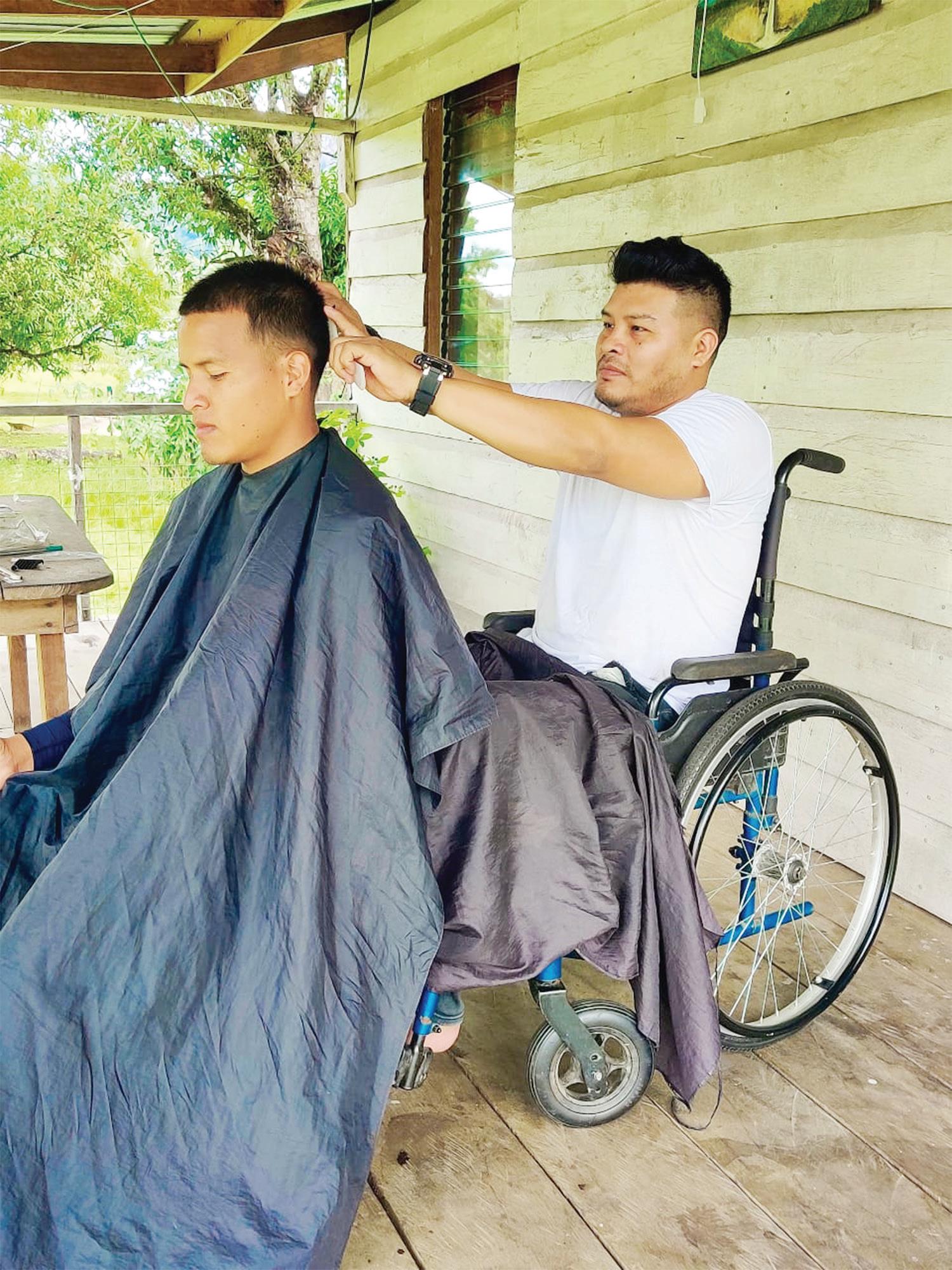
By Michel Outridge
Five years ago, Ravi Rajkumar established a bakery, but back then, he admitted that his skills were not as good as they are today. Today, through hard work, dedication, research, and acquired knowledge, he has built a thriving business—Nature’s Own Bakery.
The business, which operates from his home at Number Three Village, West Coast Berbice (Mon Choisi), provides permanent employment for 28 persons within the community and its environs.
The Bakery: Nature’s Own Rajkumar shared with Pepperpot Magazine how he managed to open a bakery right from his residence, providing quality local products that are sold countrywide.
truck, that travel from Corentyne to Parika and Linden, among other routes, to supply freshly baked bread, tennis rolls, and pastries.
“One day, I woke up and knew I wanted to start a business, but I didn’t know what. After some brainstorming, the idea of opening a bakery came to me. At that time, I had no idea how to even make a roti, much less bake anything. However, through research, reading, and consultations with stakeholders and others, I managed to get the business up and running. It was not an easy feat,” he said.
Rajkumar stated that Nature’s Own Bakery produces a variety of quality products, including plait bread, pan bread, whole wheat bread, tennis rolls, sliced bread, burger bread, hot dog bread,
all made in-house using modern ovens and facilities.
He reported that the bakery was established five years ago, and de-
The businessman explained that he provides stable, everyday employment from Sundays to Fridays, as the trucks go out every
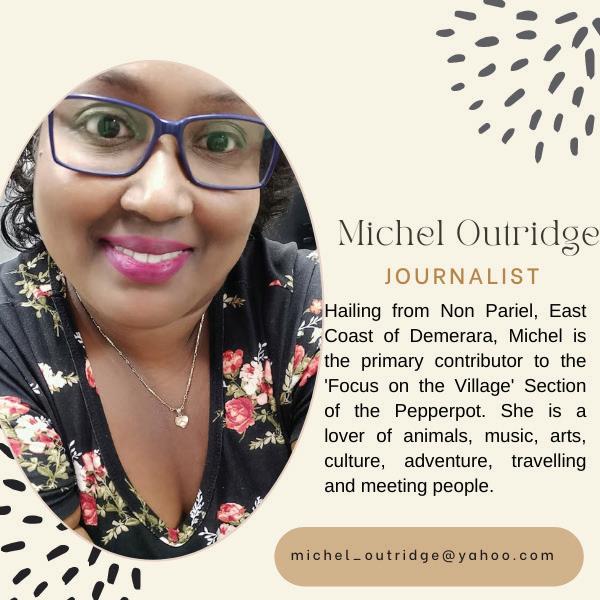
mixing area, the baking area, and the packaging area—all of which Pepperpot Magazine was able to
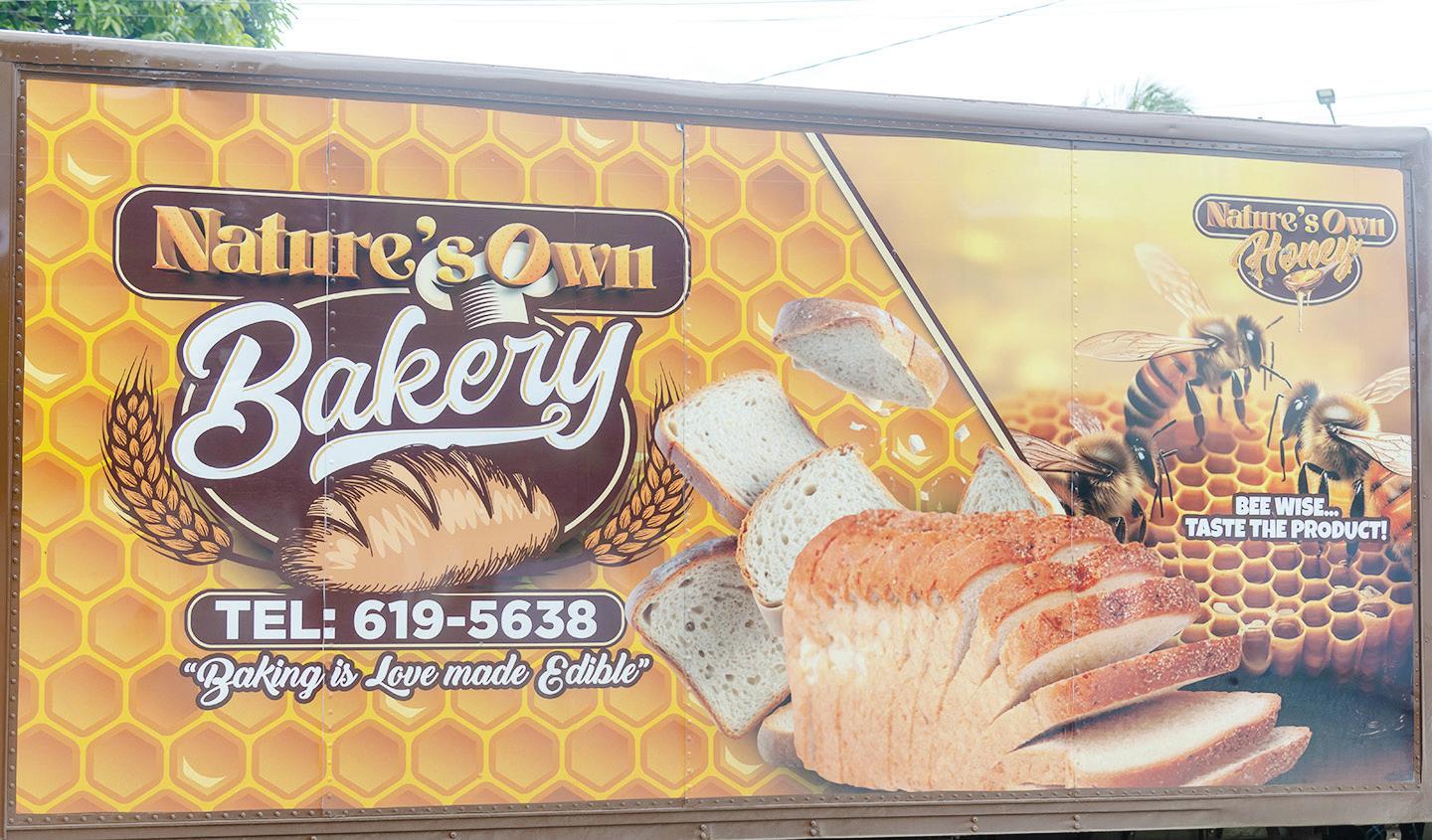
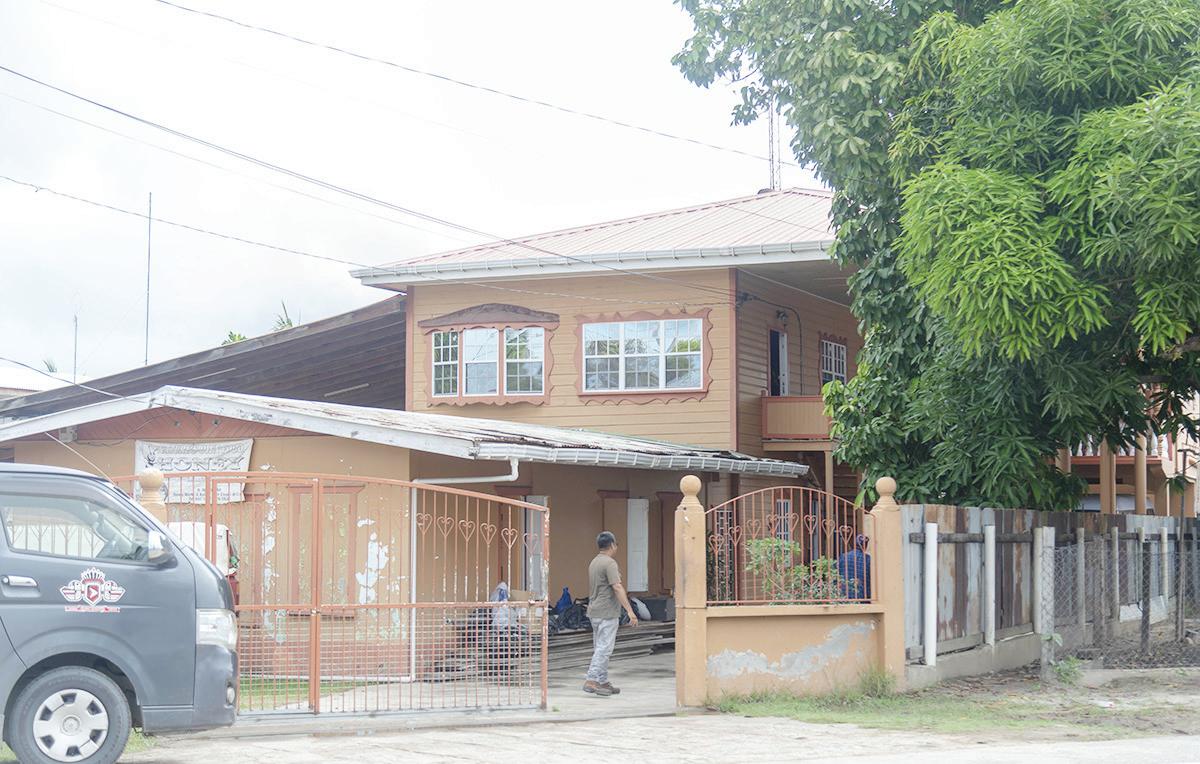
and pastries such as cheese rolls, pine tarts, pine slices, salara, buns, and butter flaps,
spite challenges with staffing, he has managed to keep the business open.
Monday and Sunday.
Rajkumar added that his bakery has three main sections: the
observe during a tour of the facility, which is outfitted with modern appliances, including mixers and ovens.
When he first opened the bakery, it operated solely on solar power, but due to difficulties, he has since switched to regular electricity.
“I give back to the community by employing locals from the village and some from Bush Lot Village. I also keep my prices pocket-friendly so that people can afford to buy a loaf of my bread or any other products from the bakery, which is a home-grown business,” he said.
Honey Production Rajkumar disclosed that he is the fourth generation of his family’s honey production business, which was started by his great-grandfather back in the 1940s. At that time, they had
large-scale apiaries with both Italian and Africanised bees and even won competitions for their 100% natural honey, which contains no additives.
“The bakery was a snap idea since honey production was seasonal. I wanted something more to do, and despite knowing nothing about baking, I went into it anyway. I experienced many trials and failures, but I eventually got it right. It is still a work in progress—not perfect—but I am able to keep workers employed and produce quality products that sell,” he said.
The businessman reported that demand for his products has increased significantly, and he is fast running out of space. He is now considering relocating to a larger facility to house an improved bakery, where he hopes to introduce new products, such as pizzas, to
AS Guyana joins the rest of the world in celebrating Chinese New Year, history enthusiast, teacher, and novelist Scott Ting-A-Kee sat down with Pepperpot Magazine to reflect on the deep-rooted legacy of Chinese-Guyanese people and his own place within that story.
Embracing his heritage
Though Scott’s early years were spent immersed in science, it was literature and history that truly spoke to him, inspiring him to follow a path of preserving culture through words. Now, as an advocate for storytelling and historical awareness, Scott’s work sheds light on the contributions, struggles, and evolving story of Guyana’s Chinese community—ensuring that their voices, like the traditions of the New Year, continue to thrive.
Guyana is home to a diverse population shaped by a vibrant history and bold past. Scott is no exception. Born to Chinese and Portuguese parents, he, like every other Guyanese, is unique. However, growing up, he did not always appreciate his uniqueness and would sometimes wish he were a bit ‘darker’ to fit in better with his peers. Today, however, he has become the go-to person for Chinese history in Guyana. Before falling in love with his roots, Scott first fell in love with literature, becoming an avid reader and writer while still in high school.
“When I think about it, the shift to literature probably started in Fourth Form. Going Into Fourth Form, I was one of the bright students, so choosing the arts stream wasn’t necessarily an option. However, at that time, I realised I had a passion for literature and languages,” he said.
This passion led Scott to pursue studies in English right after high school, eventually earning a Bachelor of Arts in English Literature. Taking it
a step further, he ventured into teaching and is now an English teacher at Bishop’s High School.
Becoming a writer
It was while pursuing his teaching career that Scott felt the need to write a book. Initially, he wanted to write something that simply interested him, and amid his research for university studies, he came up with the idea for The Red Hibiscus—a fantasy historical tale set in ancient China.
The book follows three diviners—two high priestesses of Chinese descent and a Japanese high priest—who, through their gifts of foresight, see centuries into the future, up to the time of Chinese indentureship.
The Red Hibiscus also filled another gap that Scott had identified—the lack of representation of Chinese culture in Guyanese literature.
As he explained, “We really don’t have a lot of representation in terms of Chinese-Guyanese literature. And sometimes, when you’re reading for degrees in literature, it can ruin your appetite for reading. So, I started thinking, I want to do some reading, but I want to find books that I like. And the idea for this book just kept coming back, again and again,” he said.
Since the book’s publication in 2018, Scott has continued his work in retelling Chinese stories, with some of his more recent works adopting a more historical and realistic theme. He played a key role behind the scenes in the production of From Whence We Came: The Chinese Experience.
Bringing history to the stage
Reflecting on his experience, Scott said he was proud to have been the play’s researcher, ensuring historical accuracy and cultural authenticity in its portrayal.
“The play that was recently performed at the National Cultural Centre, From Whence We Came, I played the role of the researcher. The producer, Gem Madhoo-Nascimento, reached out to me and told me that she wanted to do a play about the Chinese and British governments. A play that would capture why they came, their experiences while they were here in the colony, and even mention what’s happening now,” he said.
A bit of history
Through his research, Scott has uncovered and retraced the lives of Guyana’s Chinese people. One of the most fascinating discoveries he made was the existence of Chinatown—a hub of Chinese indentured immigrants in what is now Charlestown.
He shared some of his findings with Pepperpot Magazine:
“The Charlestown area was a little Chinatown in Georgetown. A lot of industrial labourers from plantations like Blankenburg and Windsor Forest, Scott
TURN TO PAGE XI
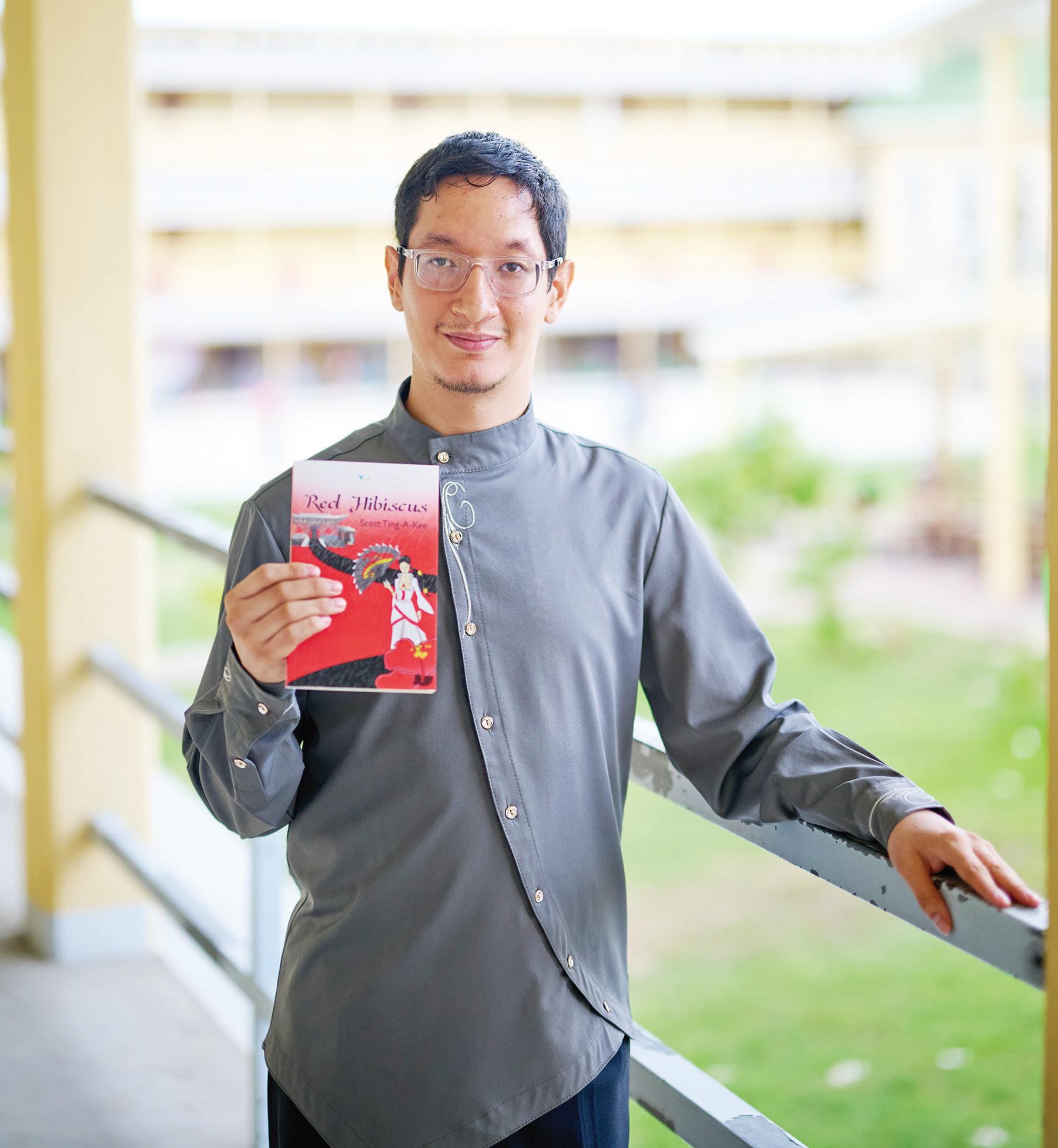

TRINIDADIAN journalist and author, Ryan Bachoo, has written a West Indian fiction novel called An Unending Search.
The book is set
plained, “It’s set in rural South Trinidad. The protagonist is a young teenage Indian boy who is working in the cane fields with a village elder called Uncle
He encourages him to leave Trinidad and try to go to New York or London.”
The book is also described as a journey of self-discovery. Bachoo
“I picked it back up 10 years later, and in late 2023, I had an editor review it. We had to cut the book in half because it was too long, and then it was
Although this is Bachoo’s first novel, he has also written short stories. He explained that his love for West Indian literature drove him to write the book.
ondary school, and so I always felt that when I looked at West Indian literature written by others, I saw stories that mirrored our own."
“In villages and
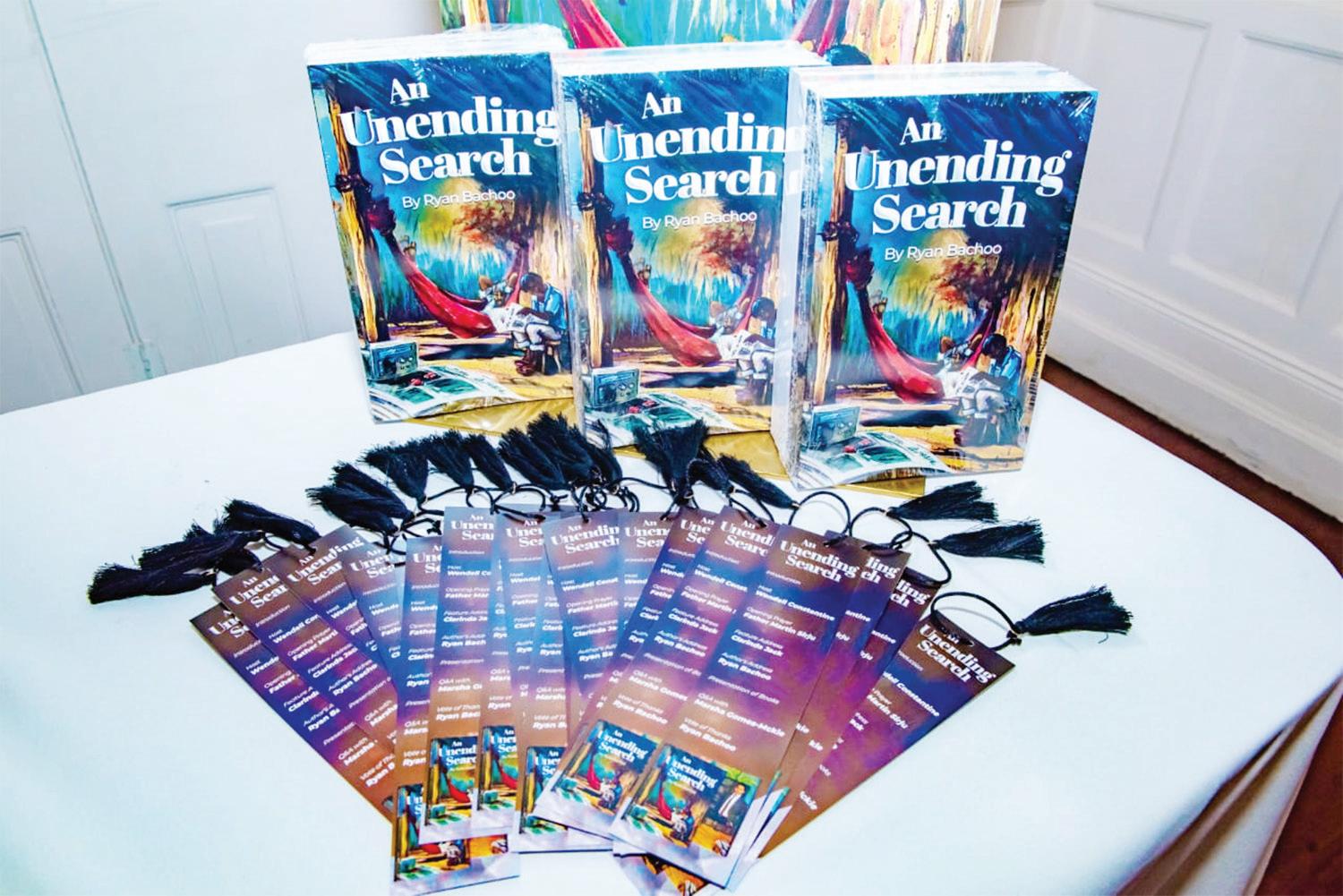
in South Trinidad in the late 1970s, fresh from the Black Power Movement. It explores and confronts several themes, including racism and classism.
The author ex -
Sundar. Uncle Sundar instils in him the belief that the government is racist and classist and that there are not a lot of job opportunities for someone like him to escape the cane fields.
started writing it in August 2009 and finished the first draft in 2014. At that point, he did not feel the book was “good enough” and also faced a lack of funds for publishing.
almost like writing an entirely different book, like a second book, because my writing had changed,” he said, adding that the book was finally published this month.
According to the author, “I grew up reading West Indian literature in my household. My parents made us read West Indian literature. I studied West Indian literature in sec-
communities across the Caribbean, you have these characters, these stories that come from these places. And really, they could go into a book, a play—because
FROM PAGE III
But since COVID-19, I never got the chance to go back,” Jeff said.
Although he has made great strides in his health, he hopes to return to therapy. However, financial constraints have made this difficult.
Pioneering a new path: recovery through barbering
Barbering has always been one of Jeff’s biggest passions. After returning home and completing therapy, he reignited his love for cutting hair. Though he has not yet reached his ultimate goal, Jeff finds fulfilment in providing for his family and contributing to his community.
“I know my daughters have to go to school, so I started cutting hair. Just knowing that I had the talent and skills, I began cutting and trimming my brothers’ hair, and then the residents’,” he shared.
His dedication has earned him a reputation as one of the best barbers in Paruima. However, because he needs clients to adjust their positioning to accommodate him, he charges half the usual rate of $1,000 per haircut. While it isn’t much, it helps him support his family.
Jeff’s perseverance has not gone unnoticed—neither by Fabio nor the community at large.
“Jeff is doing barbering right now. He developed that passion at a very young age. When he was in high school, people knew him for his skills. Even though he is in a wheelchair, he still cuts hair,” Fabio said.
A renewed sense of purpose
With a newfound outlook on life, Jeff says his mental health has completely transformed.
Inspired by his children, he now sees himself as a strong father and husband who plays an important role in their lives.
“I am happier now. The most important thing is my life. My children see my life— especially my children. I can now ensure they have a good education, and that makes me happy,” he said.
Fabio, too, has noticed the shift.
“At first, I saw in his face that he had given up. Now, he is grateful for life and for his children. Before, he would talk about not wanting to work anymore and even had suicidal thoughts. That has changed. He’s hopeful and happy with
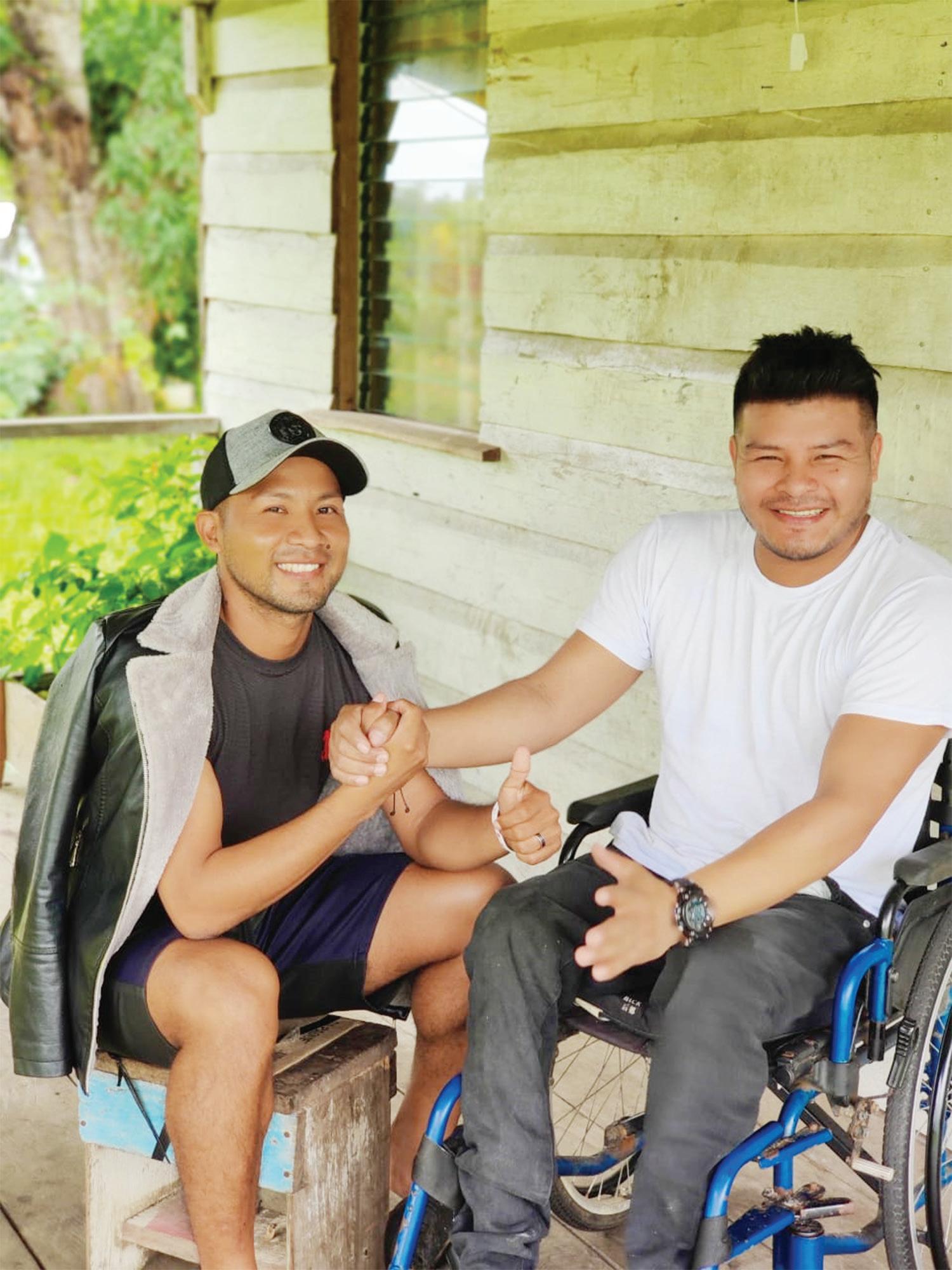
where he is now, especially with his children bringing him joy,” Fabio said. Moving forward: support systems and big
Looking ahead, Jeff has ambitious plans. He
hopes to open a small barbershop in Paruima but acknowledges that finding the funds is a challenge.
“I want to open a little barbershop and a small business, but finding money is very difficult. But that’s what I always think about,” he told Pepperpot Magazine.
Beyond his own dreams, he also wants to help others who face similar struggles.
“In the future, I would like to have a charity or programme to help others. It does not have to be financially strong, but just a programme to help people like me start their lives from scratch.”
For anyone who wishes to support Jeff’s venture, he can be reached at +592 6301688, or his brother Fabio at +592 608-8478 (WhatsApp) and elalfaciardi@gmail.com. Additionally, Paruima’s Toshao, Lee Williams, can be contacted at +592 685-1489 (WhatsApp).
Jefferson Thompson’s story is a powerful reminder that resilience, family, and passion can help overcome even the most difficult challenges.

the local market.
Rajkumar explained that the family’s honey production business was inherited, and he learned the trade from his father, who had learned it from his own father. This cycle has been repeated for four generations.
He told Pepperpot Magazine that the
name Nature’s Own was originally derived by his father, and he decided to keep it as a tribute to the family business.
Rajkumar has his apiaries at Fort Wellington in the backlands, as it is not safe to keep them in residential areas.
ey production due to challenges related to climate change. The weather is either extremely dry or extremely wet, with no balance to foster honey production in the apiaries.
Depending on their new location, honey production may slow down significantly, as the environment and trees play a crucial role in the production process.
the growing demand.
The father of two is passionate about his bakery and its products and aims to continue producing quality goods with enhanced facilities and equipment. FROM PAGE IV
However, he has scaled down hon -
He also disclosed that the bees are often disturbed in their natural habitat and sometimes relocate.
The 48-year-old stated that his locally produced honey is sold at leading supermarkets across the country, but he is unable to meet
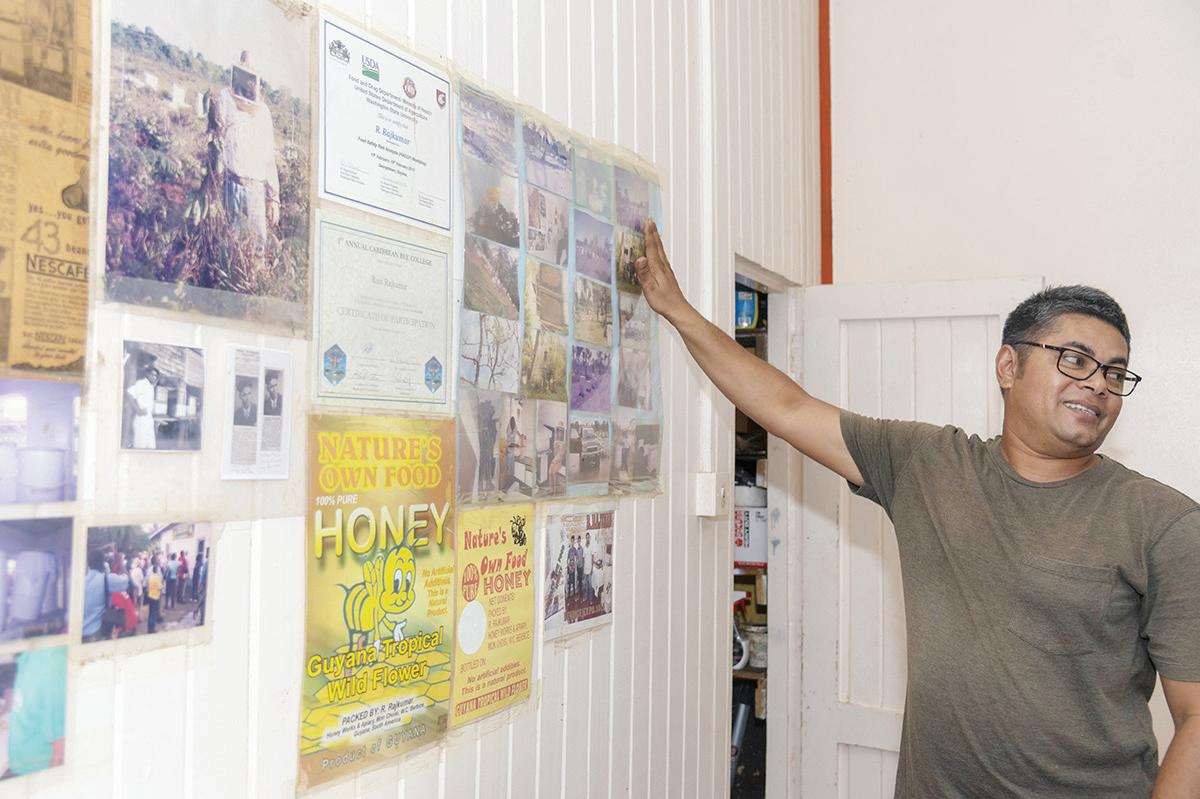
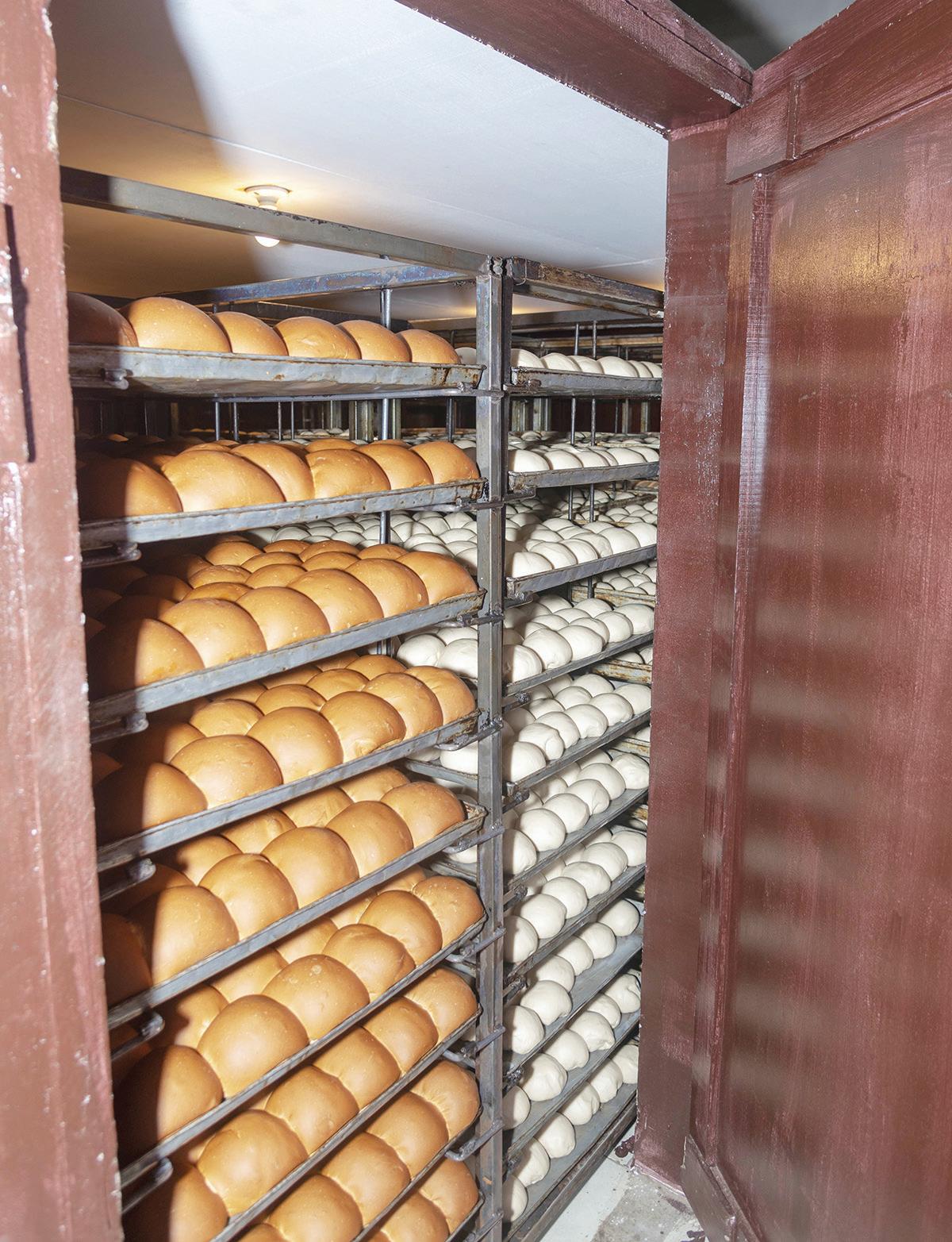
Rajkumar added that honey differs in taste, thickness, and colour depending on the area of production. His honey is also processed at his residence in a dedicated honey house, a special section allocated for honey production.
The facility meets health and safety stan-
dards and is legally registered, ensuring that both businesses operate hygienically and efficiently.
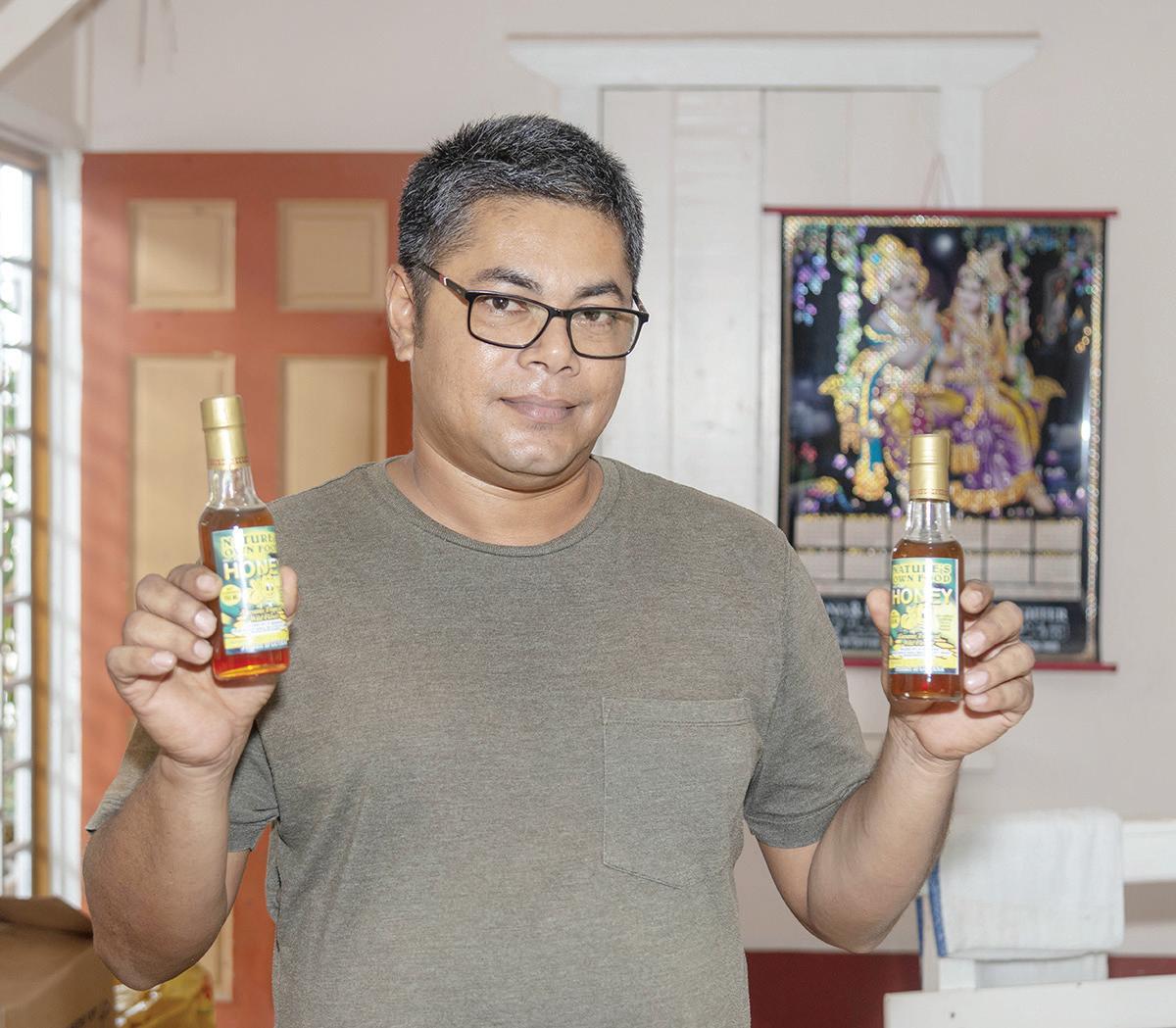
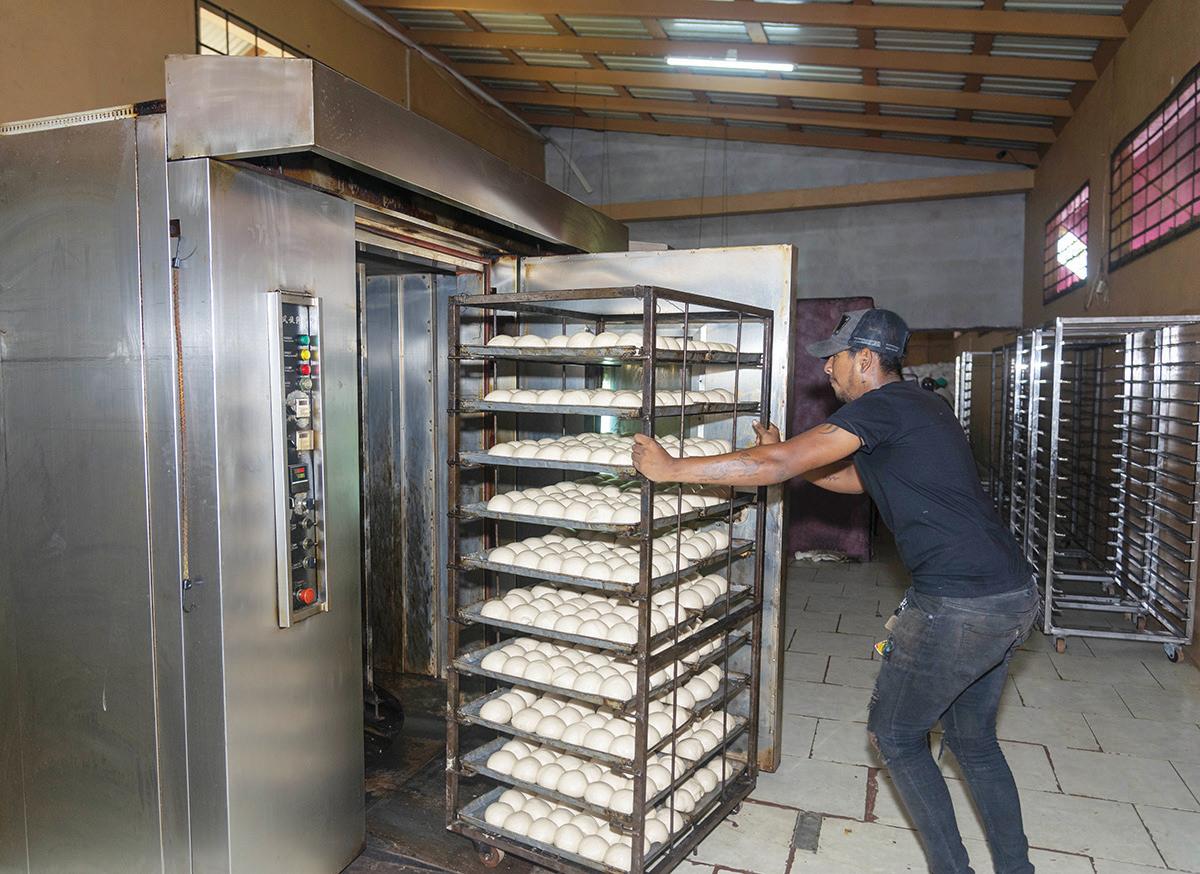
FROM PAGE II
accessories, and shoes since her style was different from the usual fashion.
She explained that her mother used to say, “Girl, I cannot trust you with a pair of scissors,” which became an inside joke among family members.
“The first time I sold a tote, the customer called to say her mother loved the birthday gift and wears it everywhere, while a teacher told me it was the best buy ever. That made me happy
about producing a product that serves its purpose,” Wilson said.
Her goal is to see someone wearing her tote in public; it would be the ultimate fulfilment of producing a local product that is both durable and of good quality.
Wilson noted that she would like to see her small business expand in a way that offers exclusivity to big companies and businesses, allowing them to personalise totes with their logos for events and other occasions as keepsakes.
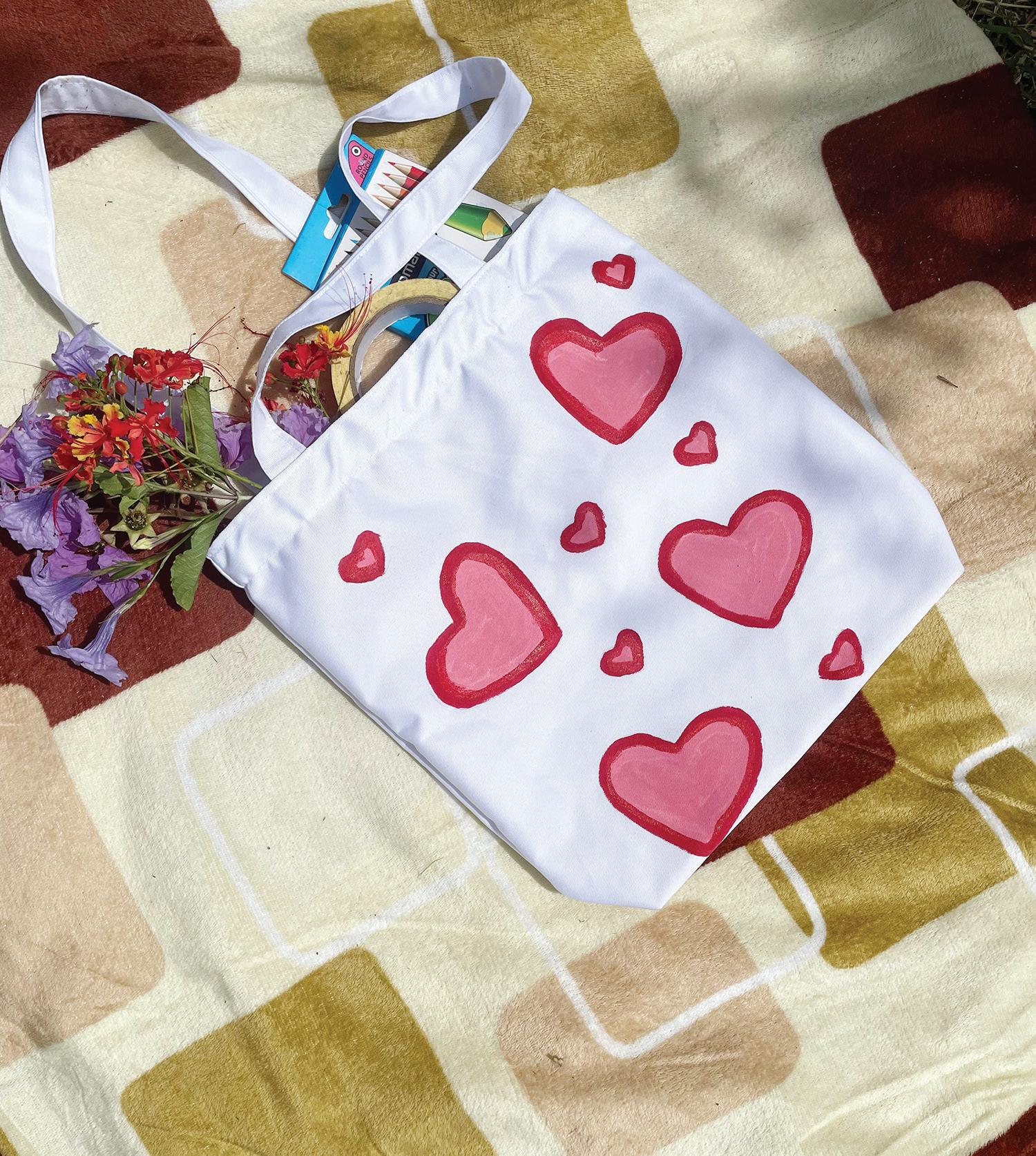
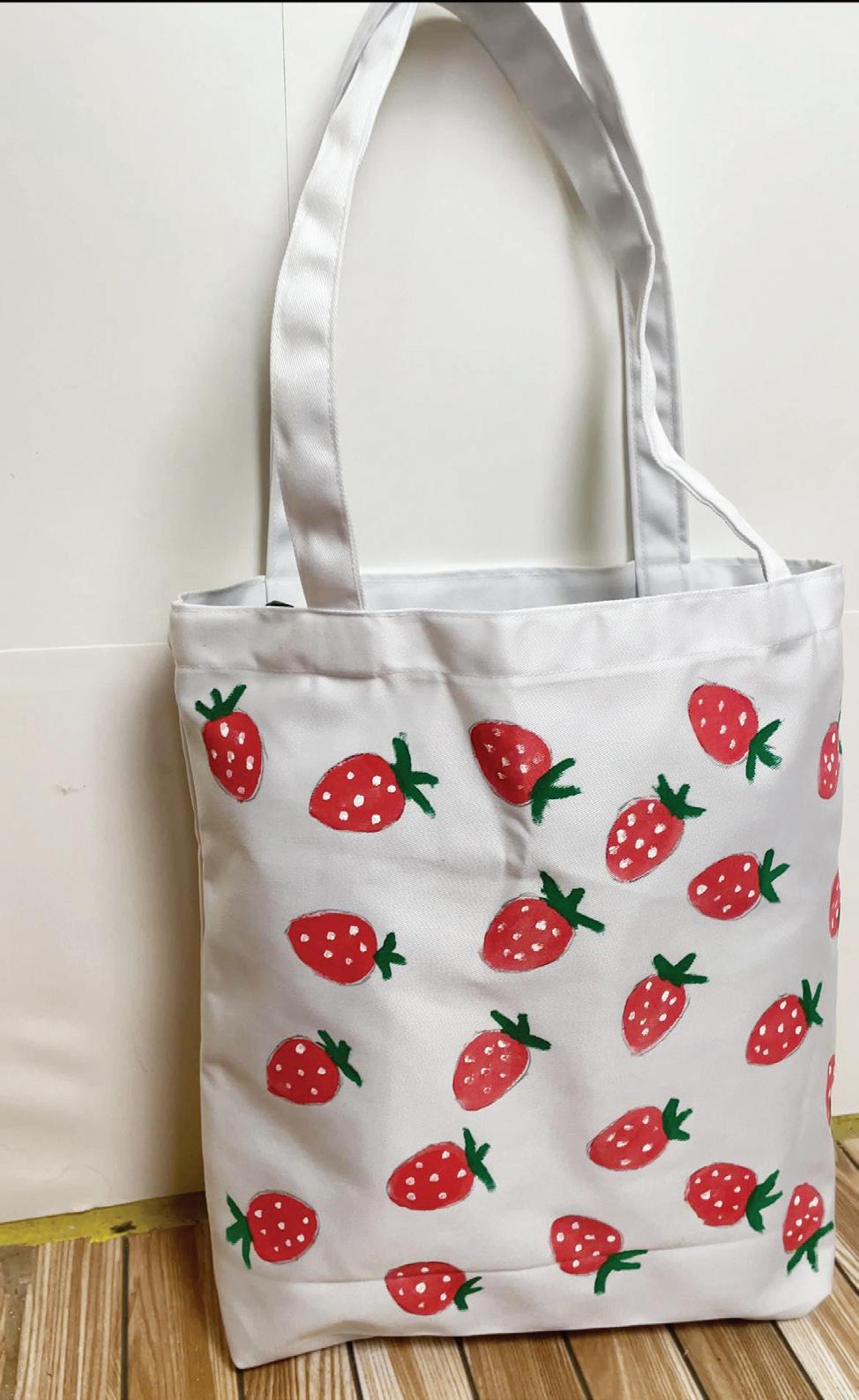
She stated that the totes are versatile, and she would redesign them in different ways to offer the same functionality but with a unique look for customer satisfaction.
Personal Development
Looking back at her practice days, it is safe to say she has come a long way in terms of personal development, having adopted an attitude of gratitude and making use of every opportunity that presents itself.
Wilson disclosed that she is currently pursuing a bachelor’s degree in art through the online GOAL programme, and it happened at the right time.
“City people are not aware of the opportunities they have, unlike those living in outlying areas such as Linden, where jobs and opportunities for personal development are usually limited and sparse,” she said.
Wilson told Pepperpot Magazine that she worked various jobs in Linden to earn a living, but the mea-
gre wages were not enough. She, therefore, decided to move to Georgetown to realise her dreams of establishing her businesses and fulfilling her educational needs to become sustainable.
The businesswoman highlighted that the transition was not too difficult because it provided her with what she wanted—opportunities—and for that, she is thankful. She knew she had to make it work.
Wilson stated that she also worked at two different call centres in the city, but at that time, she was not in a good place mentally and suffered a breakdown, which forced her to quit in order to regain her mental stability.
Today, she is a better person—fulfilling her dreams, hopes, and aspirations. She is more relaxed and enjoys creating totes, especially hand-painted ones, when she is in the right environment—Botanical Gardens, her oasis for staying focused and driven.
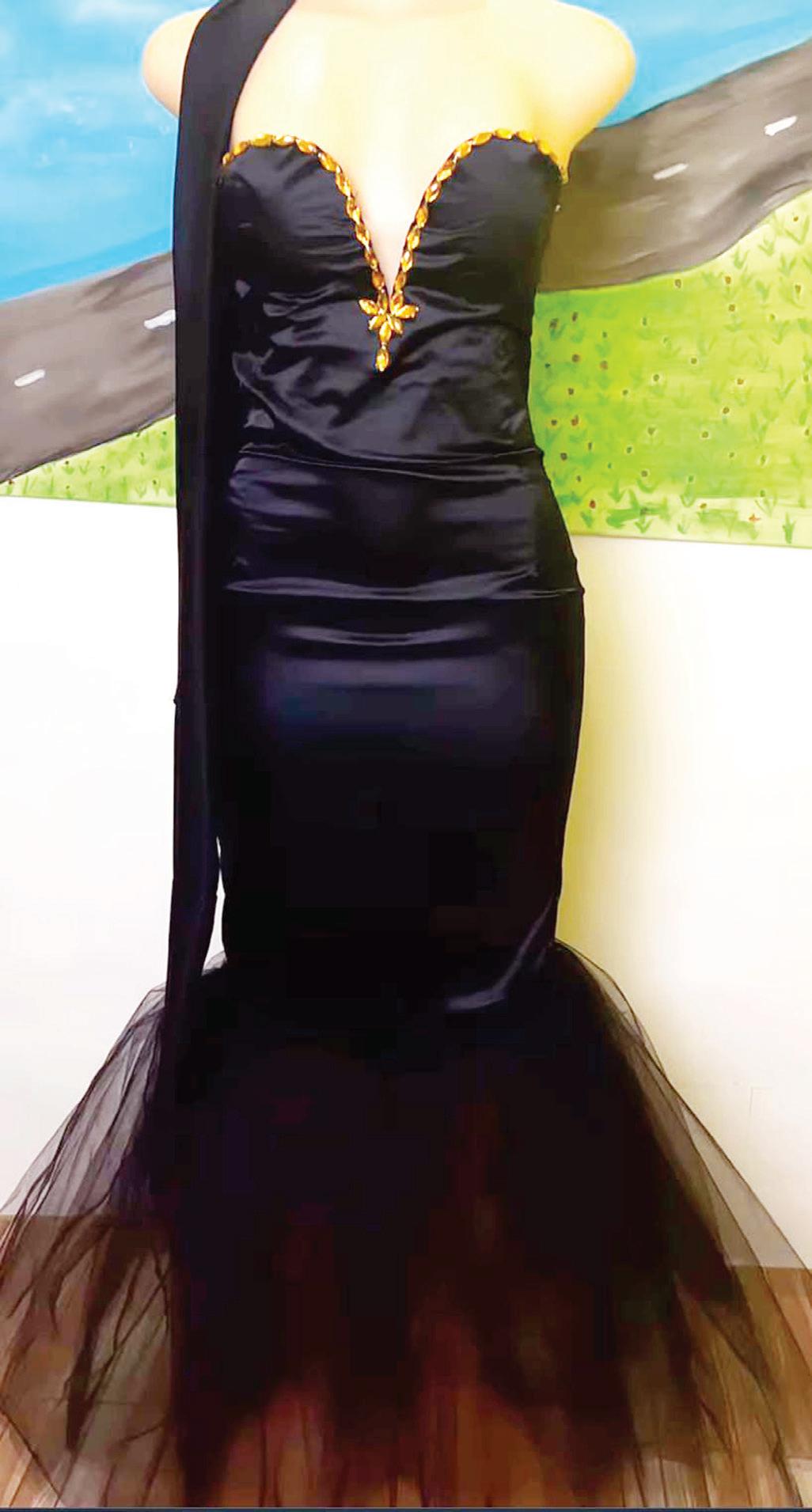


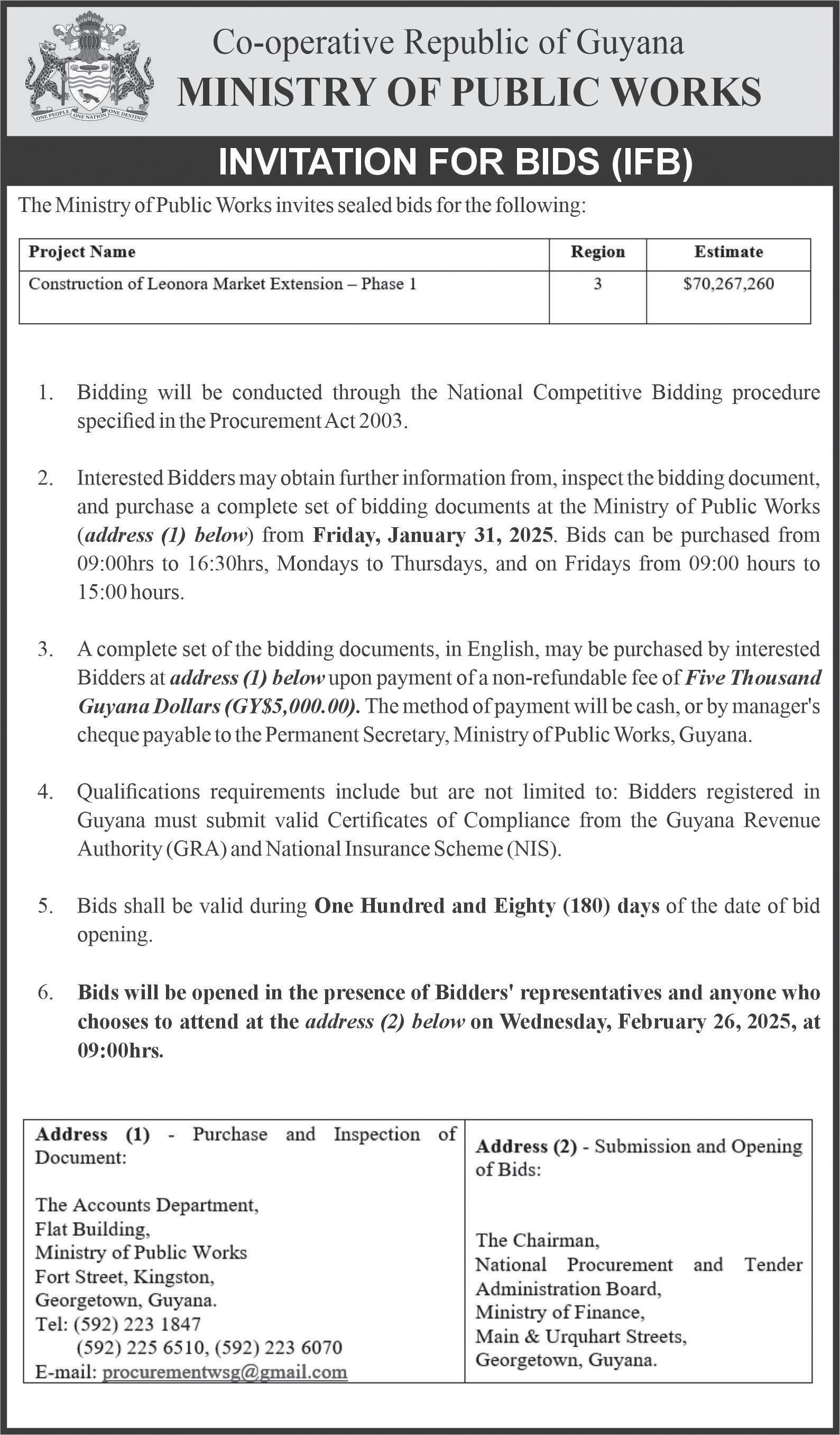


FROM PAGE V
after serving their time and completing their contracts, made their way to Chinatown, which was in the Charlestown area. Chinatown was filled with businesses—grocery stores, triangle stores, cookshops, and more,” he said.
Scott paints a vivid picture of Chinatown, describing it as a once-thriving hub of activity. Although not much remains today, it was once a community where indentured immigrants established social institutions and cultivated a unique culture.
True to its name, Chinatown functioned much like a town, with systems and institutions similar to those of the British. The Chinese community built their own churches, schools, and even a sports club—similar to how Victoria became home to freed slaves, and Palmyra housed Indian indentured servants.
However, very little remains of Chinatown today because it was tragically destroyed by fire.
As Scott shared, “In December of 1913, there was a major fire that burned down Chinatown, and as a result, the community decided it may not be wise to invest in rebuilding it. So, they dispersed to other parts of the country, and some even began the process of migrating,” he explained.
Moving forward: telling the stories of the Chinese in Guyana
Moving forward, Scott hopes to continue telling the stories of the Chinese in Guyana. From a young boy who once wanted to change who he was, to a man who now fully embraces his heritage, Scott's journey is a testament to the power of self-acceptance.
As he shared, “As someone who once had contempt for my Chinese
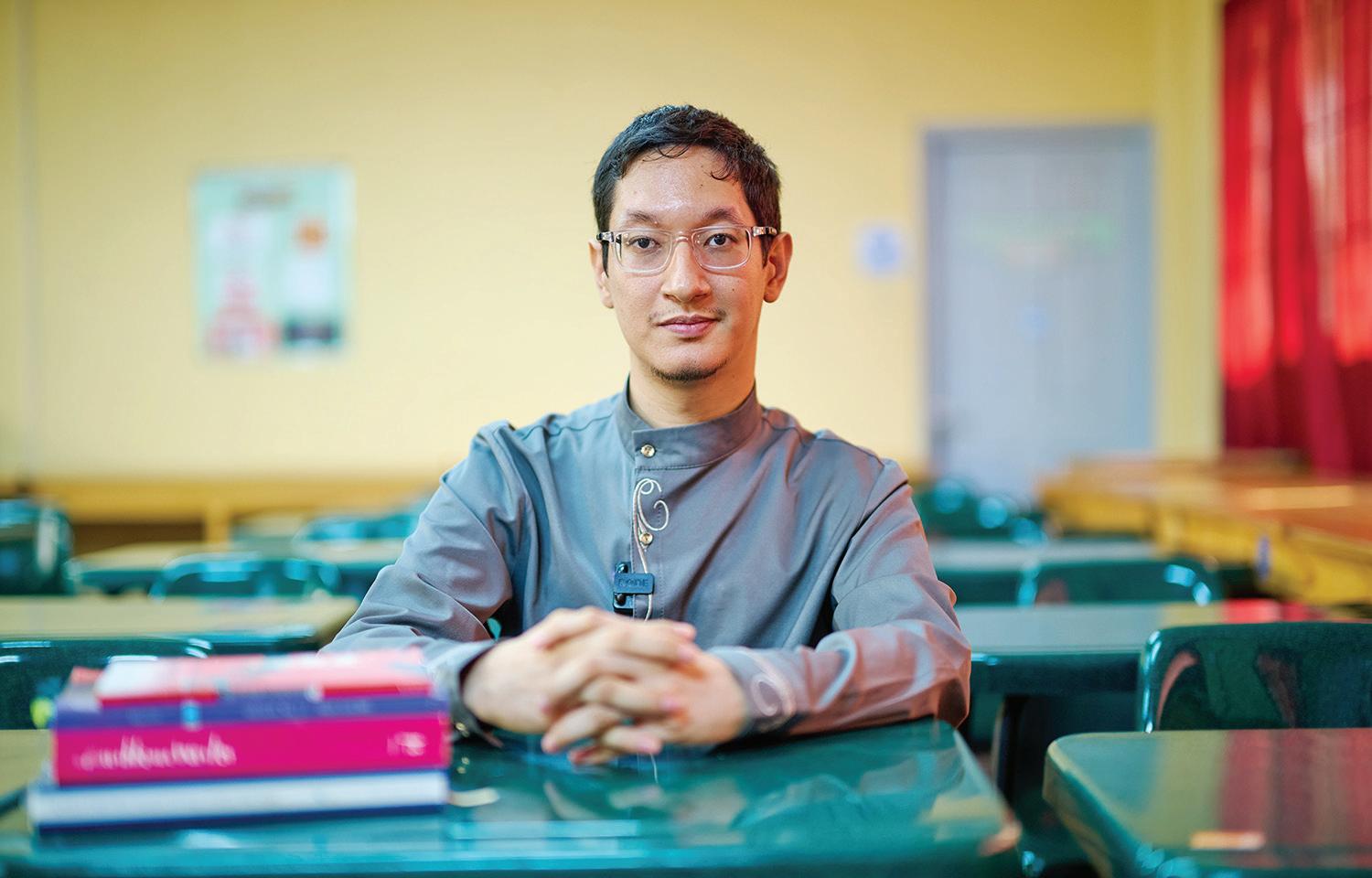
heritage, now reaching a level of acceptance and being deeply immersed in it—becoming the go-to person—it truly is a testimony of the human spirit. When we really want to make a change, we can.”

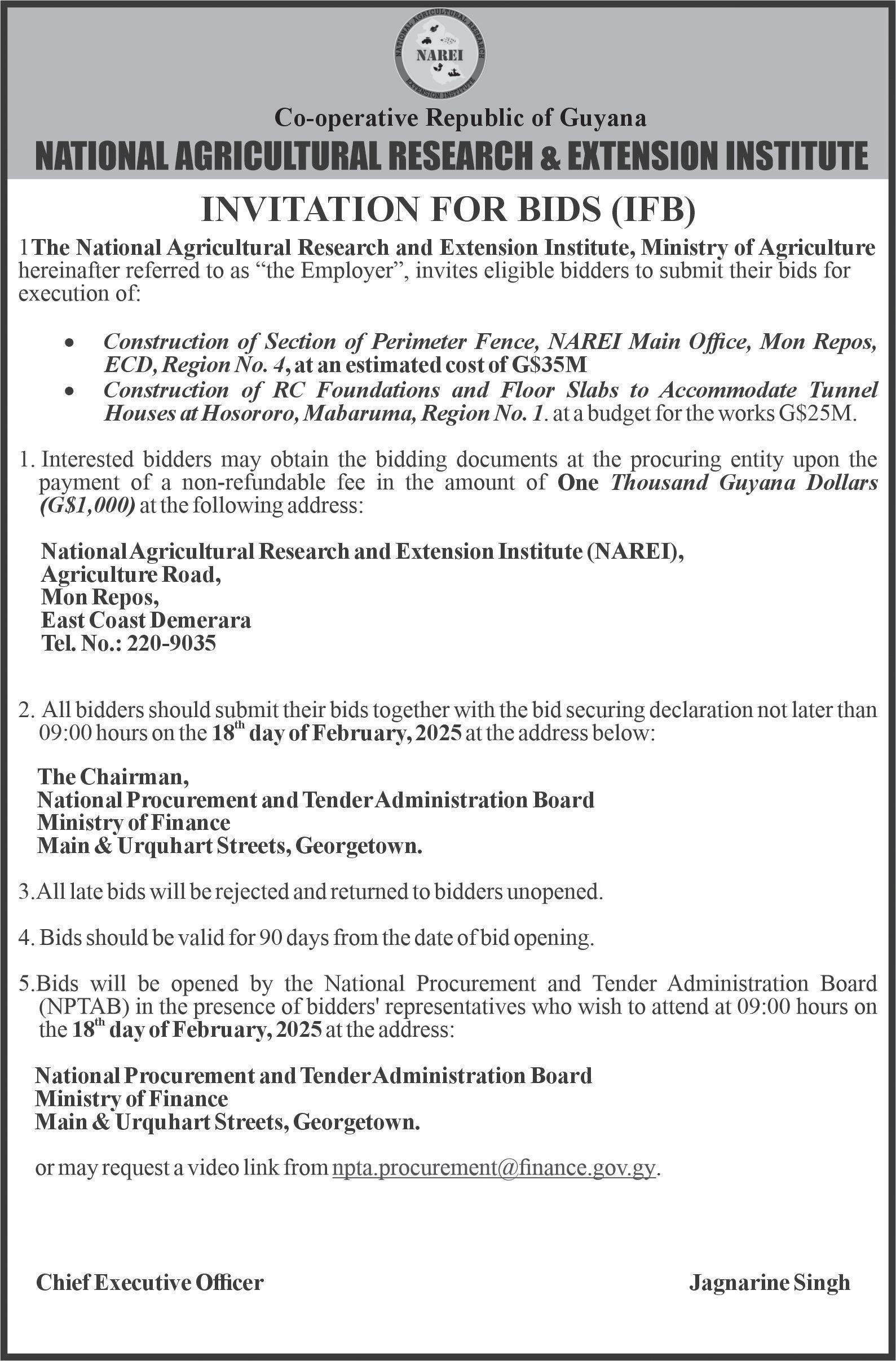
the Caribbean is rich in content when it comes to literature," Bachoo reflected.
In primary school, his favourite activity was writing essays, as it allowed his imagina-
tion to flourish. Aside from this, Bachoo has been a journalist for the past 15 years at Guardian Media Limited in Trinidad and Tobago, where he has covered a range of beats, including politics, news, and
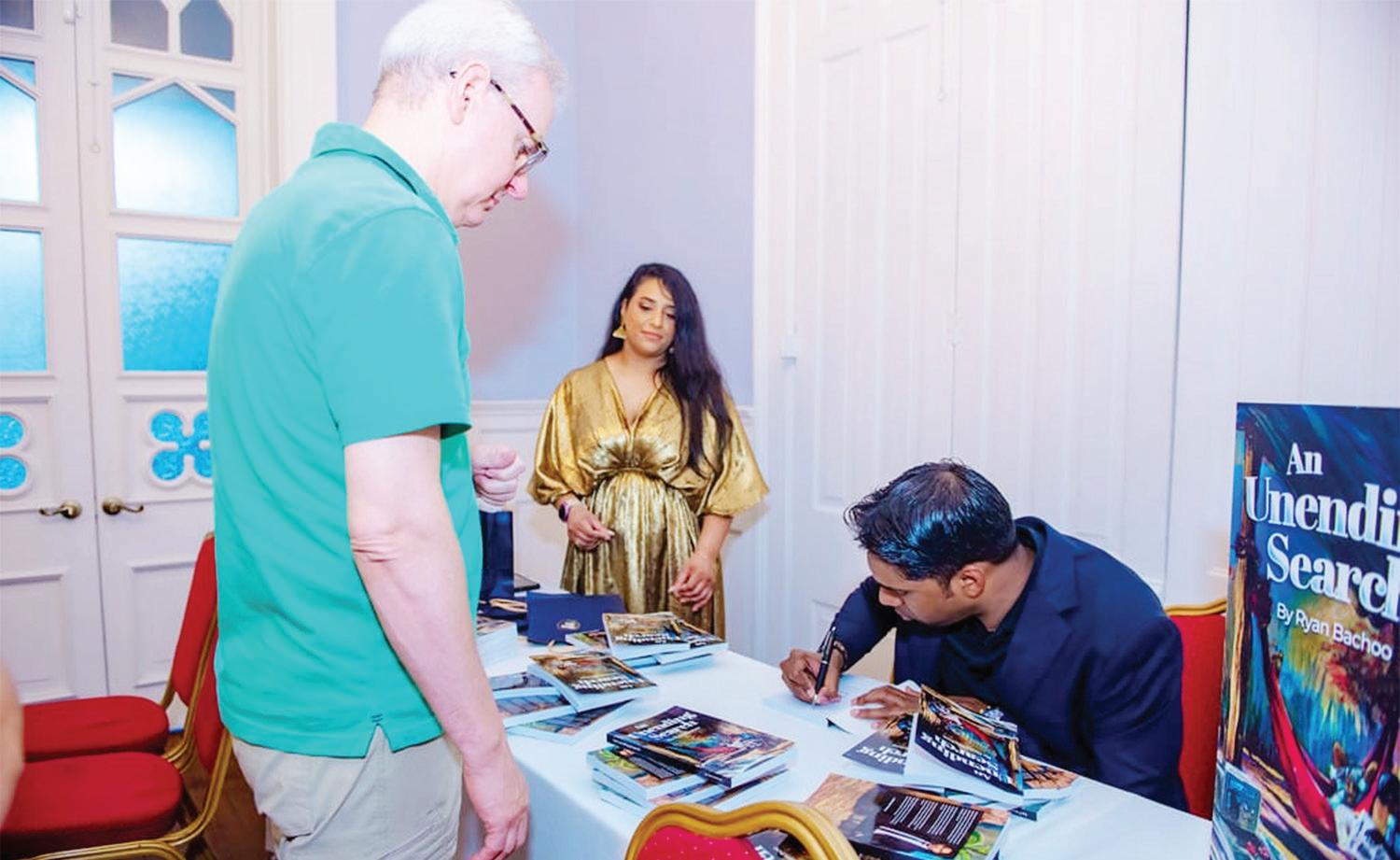
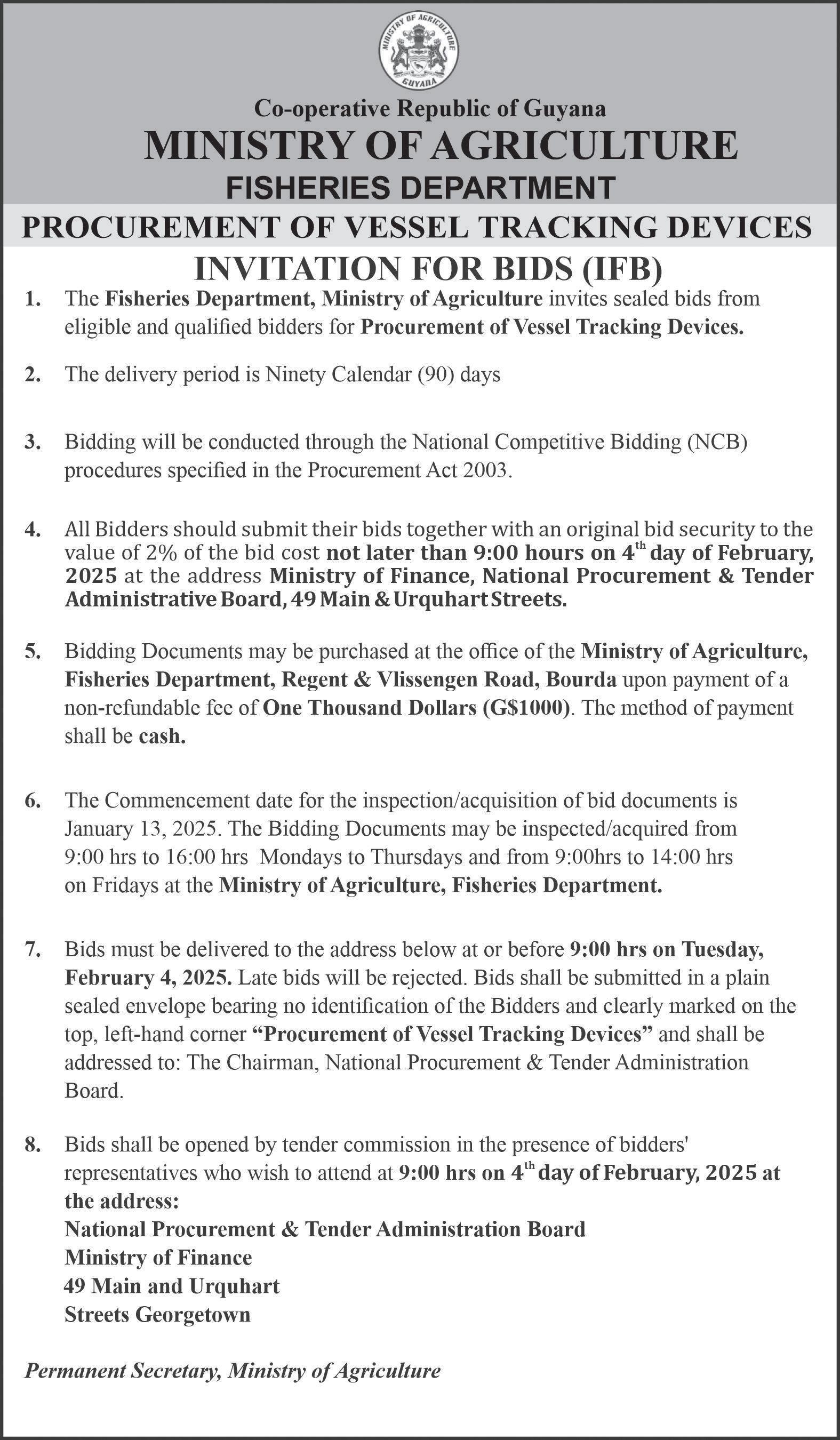
current affairs.
An Unending Search is a self-published book. Reflecting on the process, Bachoo noted, “Writing a book is 60 percent of the work. The other 40 percent is actually publishing. And the publishing process is very, very difficult and very, very challenging. So, I went the route of self-publishing, and I think it has been somewhat of a success.”
The book is dedicated to his parents. “People die, but books remain. I think this was my way of immortalising both my parents and myself by dedicat-
ing this book to them. So that when we are gone, someone who picks up this book 10, 20, 30, even 40 years from now will see that it is dedicated to my mother and father,” he expressed.
At present, the book is available in bookstores across Trinidad and Tobago and will soon be available on Amazon Kindle.
“I am actively exploring options to have the book available in Guyana. That is a huge and very important market for West Indian literature,” Bachoo said. “I am absolutely looking into ways to
get the book on bookshelves in Guyana because the history of Guyanese literature is so important. The contribution of Guyanese writers to the world is invaluable, and it is truly important to have this book in Guyana, given the country's enormous literary contributions.”
To this end, Bachoo acknowledged notable Guyanese authors such as Beryl Gilroy, Jan Carew, and E.R. Braithwaite, who have made vast contributions to literature—locally, regionally, and globally. (Submitted piece)


WHEN I think of migration and its origins, I often reflect on the animal kingdom. I remember watching National Geographic shows that frequently highlighted animal migration. Animals usually travel in herds for safety and community as they migrate from place to place in search of better habitats and food. While the concept of “migration” seems like a modern one, it is not. It is a common practice among animals and humans alike.
In our history or social studies classes in Guyana, we are taught that the Amerindians came across the Bering Strait to the lands we now know as the Americas. That is a classic example of migration among early humans. Despite this understanding, migration is often debated alongside human rights concerns in modern times.
Many countries argue that their border security is more important than human migration. For them, an increase in migration means an increase in violence, trafficking, and other crimes. After the attack on the World Trade Center in New York City on 11th September 2001, there was a significant tightening of border restrictions across the world. Countries are now implementing data collection, stricter immigration laws, and even surveillance at their borders. These measures are taken to protect their resources, public goods, citizens, and overall national security.
While these measures are implemented in the interest of national security, they sometimes violate
human rights and dignity. International laws outline that asylum seekers have the right to seek refuge in other countries if they are fleeing persecution. Despite this, border security remains strict, and many asylum seekers are placed in detention camps or centres, where they face similar treatment to criminals in a prison system.
From a humanitarian perspective, some countries have extended a humanitarian corridor for asylum seekers, providing aid and even legal support. While this assistance is helpful, the overall crisis cannot be tackled in isolation. It requires international collaboration. There should be regional or international agreements, treaties, and aid programmes across the world to ensure a balance between human rights and border protection.
Migration among animals is as old as the Earth itself. For humans, it occurs in many forms, and everyone’s intentions may be different, but they deserve the right to be heard and treated fairly in their pursuit of a better life in a foreign land.
I wanted to highlight the importance of maintaining a balance between border security and human rights because Guyana is now experiencing an influx of migrants from neighbouring countries and other parts of the world. As we secure our borders, I hope we also address the human rights implications that come with border security. It is my hope that we implement sustainable and ethical measures to ensure our borders are safe while respecting the rights of migrants and asylum seekers.



NOT “FROM WHICH
THE reality of the Americas, where we are today, is mainly a consequence of the event of chattel slavery, where kingdoms in Africa disposed of tribal threats and their own internal enemies, primarily through the European slave trade. (The Arab slave trade requires a different platform of narratives to discuss.)
It must be understood that the quest for self-aggrandisement at the sacrifice of other living beings compels an embrace of darkness that suppresses all acknowledgement of common humanity. What followed the Middle Ages
was a tremendous effort to cultivate an alternative mythology, distorting what was already known and ingrained through religious systems from North Africa to other parts of the continent.
Therefore, the following becomes relevant in the pursuit of clarity:
Centuries before Europeans adopted Christianity, Africa had already been engaged in deep religious conflicts. One notable instance was the struggle between Akhenaton and the Theban priesthood in Khemet around 1350 B.C. This intense religious con-
TURN TO PAGE XVI
YOU’RE FROM”
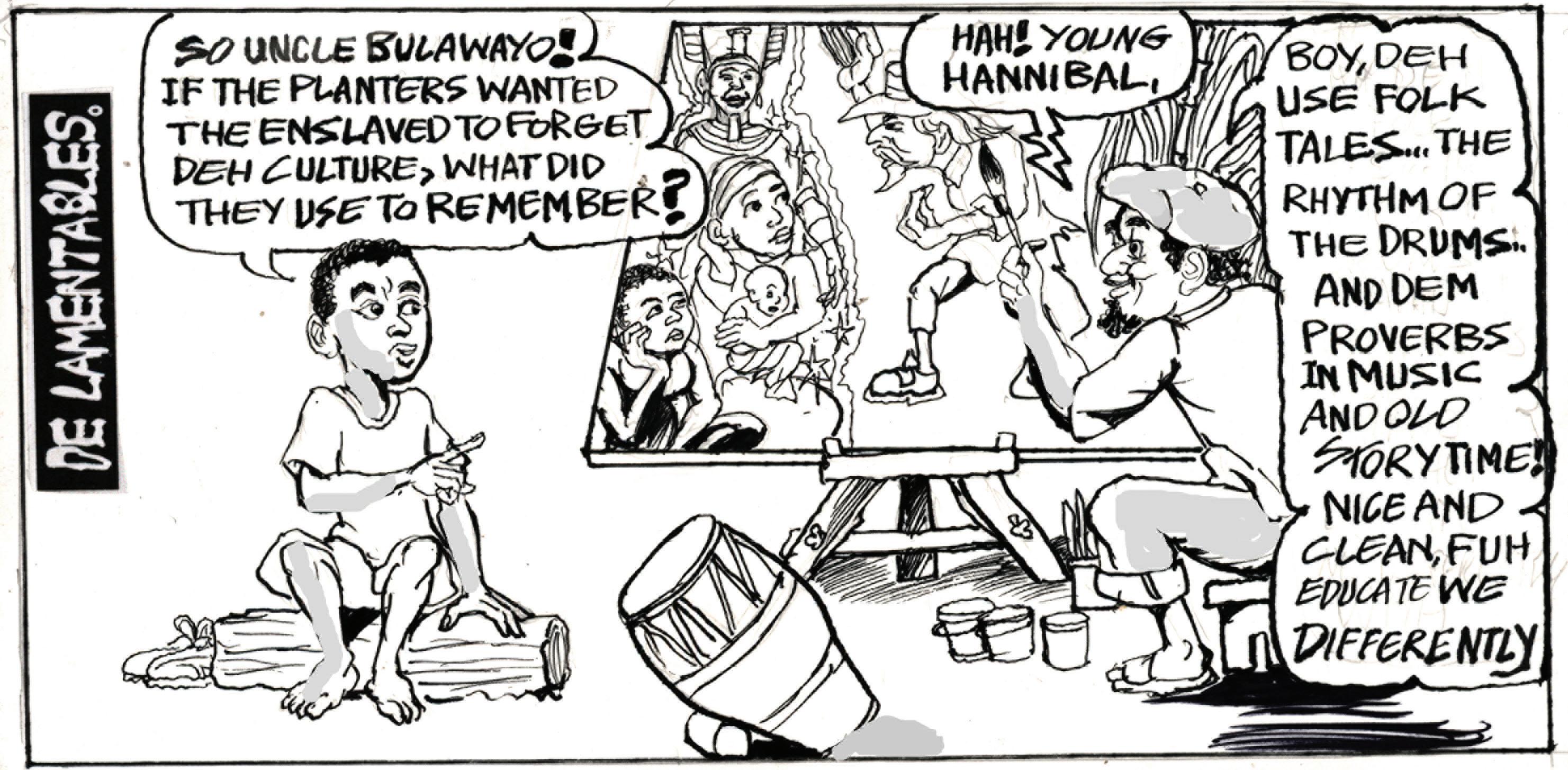


Scars, like stars, have a way of telling important stories. Every wound that has been inflicted on a member of the human race tells a story—a story of survival, a story of the things that have made us stronger. Every new day marks a milestone for the endurance of humankind. However, what if there were
scars whose meaning was no deeper than the wounds that caused them? Would each new day still be filled with so much hope if scars were not symbols but merely reminders of the darkest parts of a human heart that would inevitably resurface time and again?
The Second World War ended in 1945. The last generation of people
who fought or experienced that period is slowly fading away. As they leave our world, they are taking their scars with them. They are taking away the memories that remind us of an era of darkness and suffering. Yet, even as they depart, we celebrate their sacrifices and recount tales of their courage. We also study

the circumstances and forces that led to the war, ensuring that each new generation remembers it. Although decades or even centuries may pass, we strive to remember certain events that have shaped our world, for better or for worse.
Today, we stand at the brink of a new kind of existence, where
our priority is no longer just about surviving but about becoming the best version of our species. The majority of the world no longer worries about basic necessities such as food, water, or clothing. Instead, we turn to the sky in search of adventure. We explore new worlds in the minuscule universe of atoms and molecules.
We attempt to create and extend life itself. Yet, much like the very nature of humankind, our development remains fragmented. Yes, we have begun to explore space and examine the limits of life, but does this truly matter when only a few of us have the opportunity to do so?
TURN TO PAGE XVI
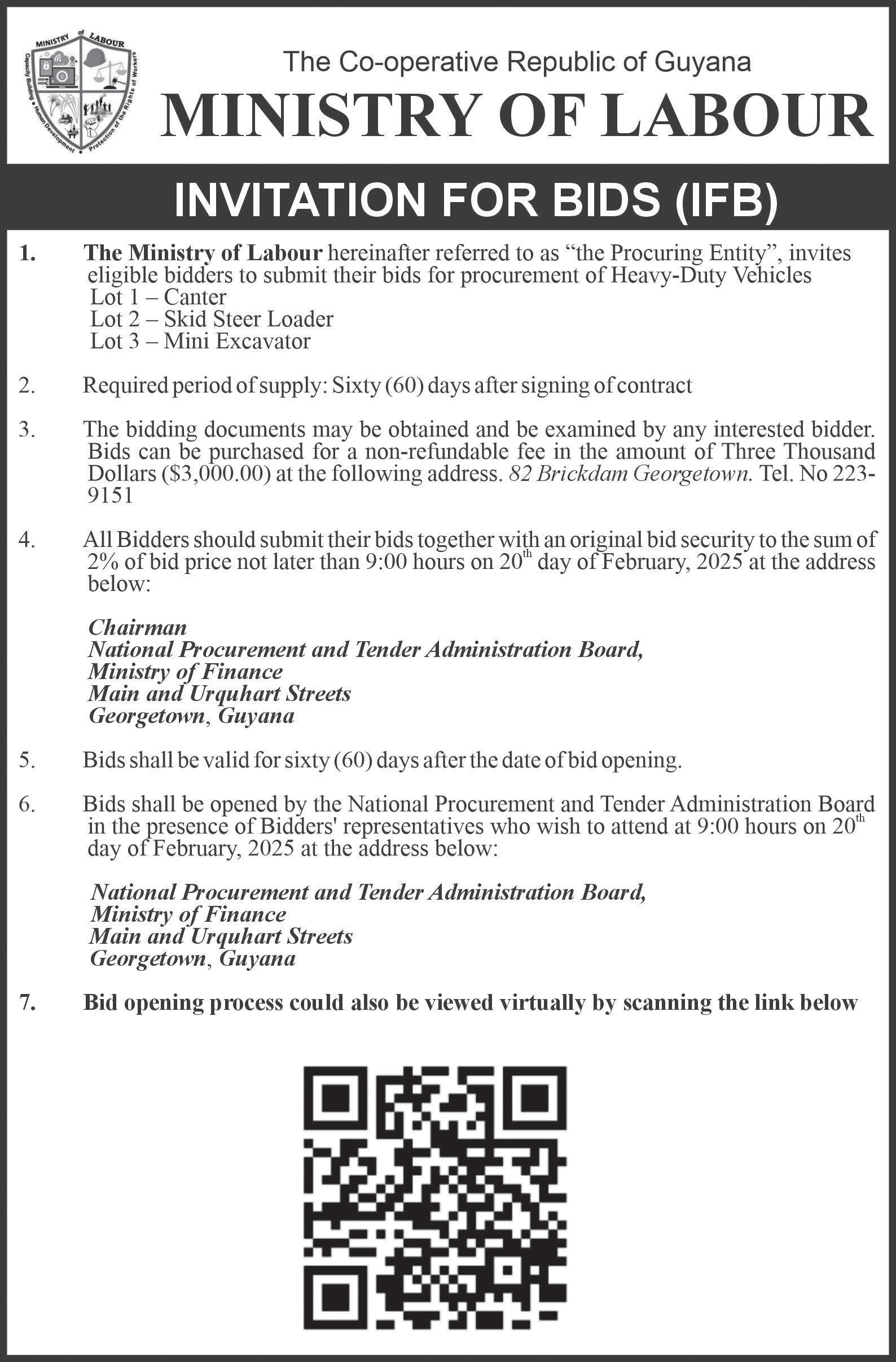
FROM PAGE XV
The story of scars is such that when they fade, the wounds that caused them are quickly forgotten. Many of humanity’s scars are fading, yet some parts of the world are still bleeding from unhealed wounds. As such, Generation Z faces the unique dilem-
ma of taking responsibility for a world that, on the one hand, is thriving and moving towards a bright future while, on the other, is edging towards war, poverty, conflict, and bloodshed.
The scars that our predecessors bore as a result of conflict and war are not just indications
of past wounds; they are symbols of the kind of world that we must never create again. Yet, just as those scars are disappearing, a different version of the past is, unfortunately, becoming a reality once more.
This burden of correcting inequitable development is a heavy
one to bear. It is a task that several generations before us have not yet fully been able to achieve. Yet, each individual who is a part of this world has an equal right to every resource and opportunity. As such, we must make deliberate efforts to ensure that even if

we are not able to create massive change during our own lifetime, we at least make the task more achievable for the generations to come.
For now, a large part of Gen Z has not yet reached adulthood. Those who are adults are still quite new to the journey. Regardless of these factors, we still hold the power to raise our voices and use our collective strength to advocate for decisions and changes that will impact our future. Unlike most generations in the past, today’s younger people have the literacy and the opportunity to
form opinions about the greater world and act on them. Let us ensure that we make use of these chances to the fullest.
Scars from the past carry stories with them. However, these stories quickly fade and lose meaning if the lessons they bear are no longer remembered. Our generation is characterised by novelty and unprecedented development. Neither of these qualities is truly valuable if members of our world are still trapped in a story that we no longer have the time to hear.
flict influenced the ancient world of Khemet. It is believed that the followers of Akhenaton’s monotheistic vision of one God later formed the foundations of the biblical Hebrew nation, defying the long-established pantheon of Khemetic gods. This historical evolution outlines the connection between the Bible and its later use among enslaved Africans—who were, at the time, unaware of the added myths concocted to justify their bondage.
The reader must begin by understanding that the entire biblical narrative was written within the continent of Africa, as were the nations mentioned within it. In a follow-up article, we will discuss the nations of the Bible.
Thus, Black History Month should first serve as a space to interpret what is already known and what still needs to be uncovered about our past in order to gain a deeper
understanding of today’s realities. In closing, an understanding of the biblical presence, along with an awareness of the argued diversions that were manipulated to make slavery functional and justified, should be explored further. These aspects, which were not referred to in detail here, will inevitably lead to a discussion of belief systems—whether religious or current indoctrination props—that can only exist functionally if people remain unaware of the nuanced references hidden within them. Look out for exhibitions and invest in a book—whether from Austin’s or a second-hand bookshop—by any local or foreign writer who has researched this period in history. It will ignite the courage to explore self-awareness and defeat the reality that those who resist learning and self-exploration will fall into the trap of being misled into self-contempt.




ON the edge of the creek, a painter sat, the silent swishes of her brushes capturing that splendid scene. She got up and stepped back to
admire yet another captivating piece of art.
Art was her life, a deep love that uplifted her spirits and brought a smile to her
lips.
Aruna put down her brushes and sat by the water’s edge, staring across the silent creek as the sun slowly disap-

peared over the horizon. She inhaled deeply, absorbing the soft fragrance of tranquillity that had become a close part of her life since she moved to this interior region. She had needed to be alone, to be away from the world after that horrific accident, to find some peace and ease the pain.
She still woke up at night, though, hearing her own screams and feeling the impact of the collision that sent the car flying, trapping her inside.
Fate had literally torn up the script of her dreams, her world crashing into darkness as she lay in a coma for two weeks.
Her fiancé, Bryan, had miraculously escaped severe injuries, while her family
messages fewer, and, a month after her discharge from the hospital, he broke off their engagement.
Tears misted her eyes as she sat by the creek, a lonely figure, and she whispered quietly, “So much for love.”
It had hurt her deeply, but she had to stay focused on what mattered most—saving for the plastic surgery to reconstruct her face. The cost at one of the best clinics overseas was far more than her family could afford. Time slipped away as they struggled to acquire the funds, and the stress began to affect her mental health. Aruna felt she needed to be alone—somewhere far away.
An old friend of her uncle owned a cabin in the woods,
Sometimes, while searching for the perfect spot to set up her easel, she would cross paths with them. She never looked at anyone directly but simply raised a hand in greeting, keeping her head lowered.
Time went by, and one day in mid-August, she set up her easel near a small waterfall, focused on capturing its beauty.
A smooth, deep voice startled her from behind.
“That’s a beautiful scene.”
She almost dropped her brushes, not realising that a small group of tourists had arrived at the waterfall.

was left fearing she might not survive.
“If only he had not been speeding,” she kept saying to herself when she regained consciousness. “If only he had listened to me when I asked him to slow down.”
But that could not change anything now. When she was finally shown the damage to the left side of her face, she screamed in horror and, at that moment, wished she had died.
Bryan, after recovering from his injuries, visited her often, offering the comfort she desperately needed. But after seeing her face, his visits became less frequent, his
a safe and secure place. The peace and the embrace of nature did wonders for Aruna’s state of mind. She began painting again and sent her pieces to art studios to sell. It did not bring in much money, but she was thankful for every bit that could be added to the fund for her surgery.
“I guess I need a miracle,” she sighed as she settled down to sleep. “I wonder where that could come from?”
She had cut her long hair and styled it so it fell over the damaged side of her face. It helped to conceal the scars whenever she encountered tourists visiting the region.
“Yes, it is,” she replied, quickly pulling her hair over her face and keeping her head lowered so she wouldn’t have to see who was speaking. He noticed her nervous reaction and smiled apologetically. “I’m sorry. I didn’t mean to startle you.”
She nodded slightly in acceptance of his apology and watched as he joined his friends at the waterfall.
“Wow,” she whispered to herself, then quickly packed up and left.
For the next two days, she worked on other pieces before returning to the waterfall, hoping no tourists would be there this time. She was sitting on a rock, her bare feet dipped in a rushing stream when she heard voices.
TURN TO PAGE XXIII





FROM PAGE XVIII
Turning around, she saw the same tourist, the one who had spoken to her, now returning from a hike with a native guide.
He raised a hand to her.
“Hey.”
She hesitantly raised her hand a little, hoping he wouldn’t come over. But he did.
“How’s your work going?”
“Good,” she answered with a small smile, not lowering her head too much this time.
A sudden gust of wind blew her hair away from her face, revealing the scars she had tried so hard to hide. The shocked look on his face made her stomach sink, and she immediately turned away.
Back at the cabin, frustration overwhelmed her.
“It’s what I’ve been avoiding for so long!” she cried, throwing her paint and brushes across the room.
Her mother, who had been spending time with her that week, tried to comfort her, holding back her own tears.
“I can’t talk to anyone,” Aruna sobbed. “I can’t look them in the face. How much longer do I have to live like this?”
Her pain was heartbreaking, but her mother, crying quietly, managed to calm her down.
A few days later, she refocused on her work, finishing the waterfall painting and sending it, along with a few other pieces, to an art exhibition. All her paintings sold, but, once again, not at a high price.
Then, three months later, she received astounding news.
Her waterfall painting, bought by a tourist in Georgetown, had been entered into an art exhibition in New York. It had been submitted with her name as the artist and sold for an astonishing sum.
Aruna couldn’t believe it!
“Is this the miracle I was waiting for?”
The money covered the full cost of her plastic surgery overseas, and four months later, she stared at her reflection in the mirror—seeing a new person, beautiful once again.
There was now a blessed light in her life.
“Thank you, dear Lord,”
she whispered, “for the new me, for a second chance at life… and to that mysterious person who helped my painting sell.”
That December, she attended an art exhibition showcasing her work when a familiar voice spoke behind her.
“Beautiful artwork.”
She turned around and felt a sudden warmth in her heart.
It was him—the tourist from the waterfall.
“Thank you,” she said with a smile.
He looked at her for a moment and then, pleased, said, “Now I get to see the artist and her smile.”
“Sorry about that time… I wasn’t in a good place.”
“I know. But I saw a girl who, despite her sadness, was passionate about her work.”
Aruna felt happy to be able to talk to him now. He told her he was back in the country looking at investment opportunities.
As they stood there talking, the organiser of the exhibition approached them.
“Mr Brody, I see you’ve met the artist of the last painting you bought.”
Aruna looked at him, surprised. “You bought one of my pieces?”
“Yes—the waterfall scene.”
“What?” She stared at him in disbelief. “And you entered it in the New York exhibition?”
He smiled and nodded.
“Oh my God,” Aruna gasped, sitting down as her knees went weak.
“Why did you do that for me?”
“The pain I saw that day on your face touched me, and I decided to find a way to help.”
With deep gratitude in her eyes, she stood up and hugged him. “Thank you so much.”
“Well, I guess it was worth it,” he said with a little laugh.
She stepped back, her heart full of joy. A stranger had shown her kindness in her darkest moment and had helped her in a way she never expected.
He extended his hand.
“I never got to tell you my name—I'm Matthew. And I’d like to be your friend.”
She smiled warmly and took his hand.
“I’d love that.”
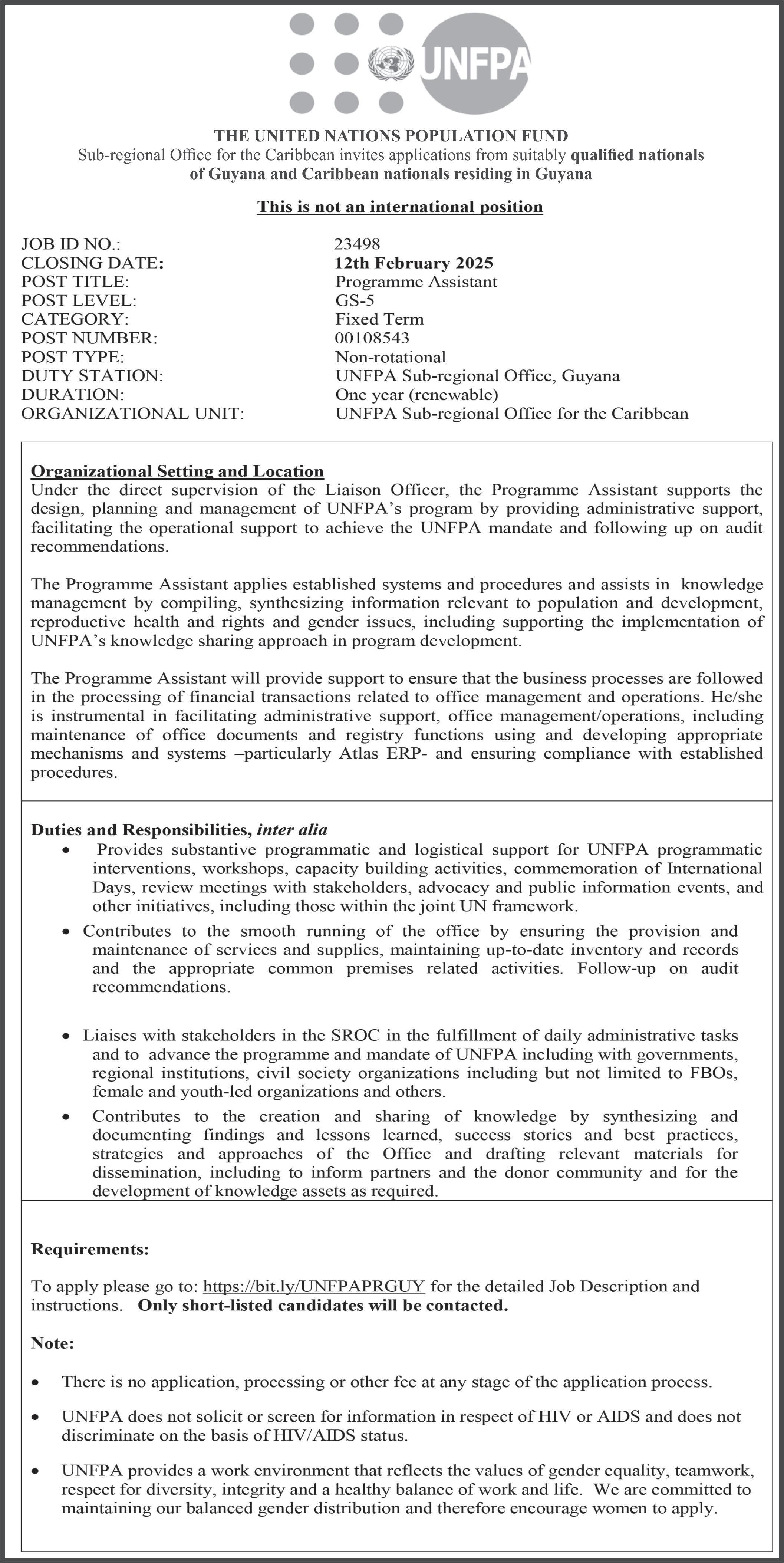












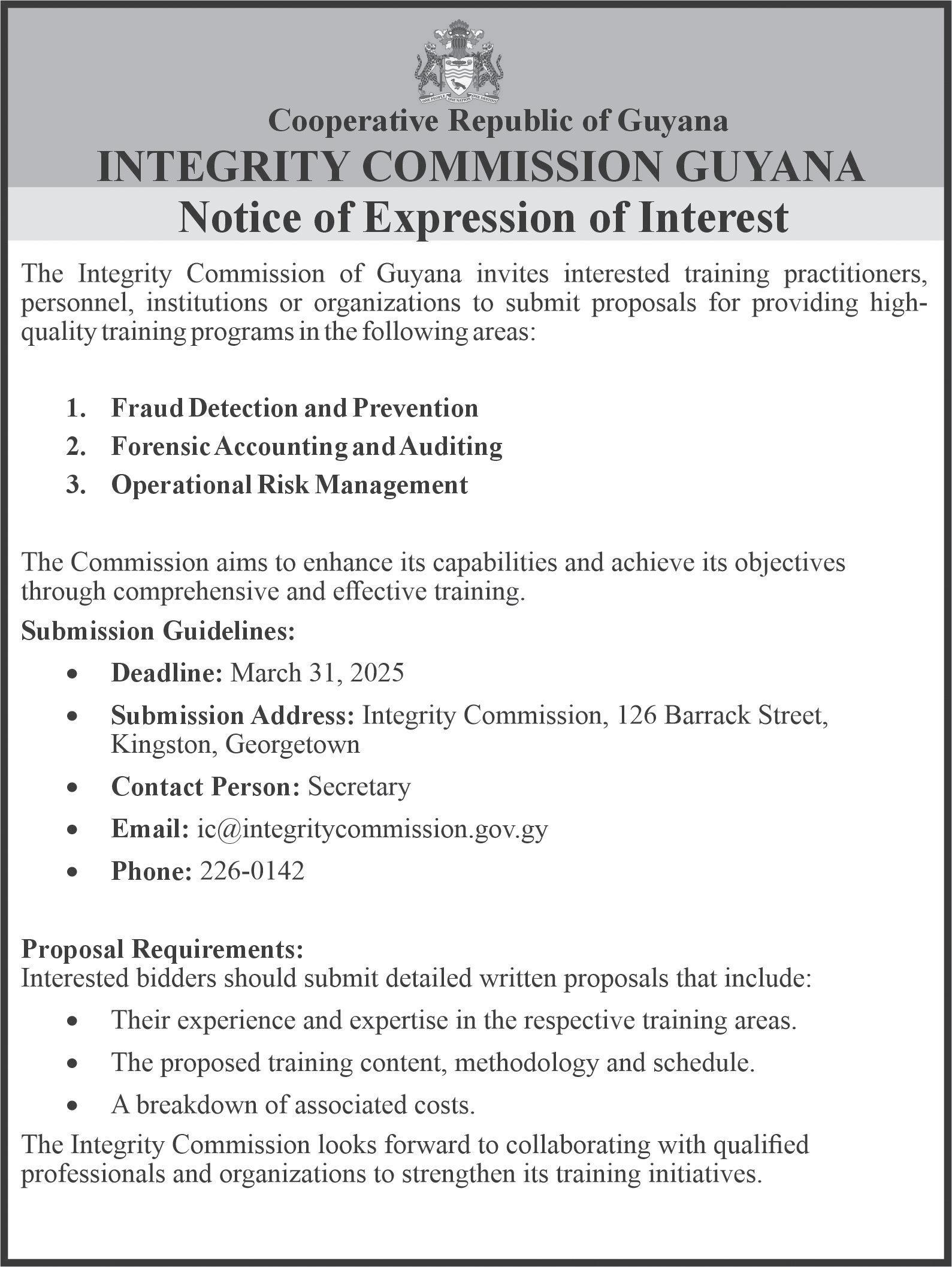


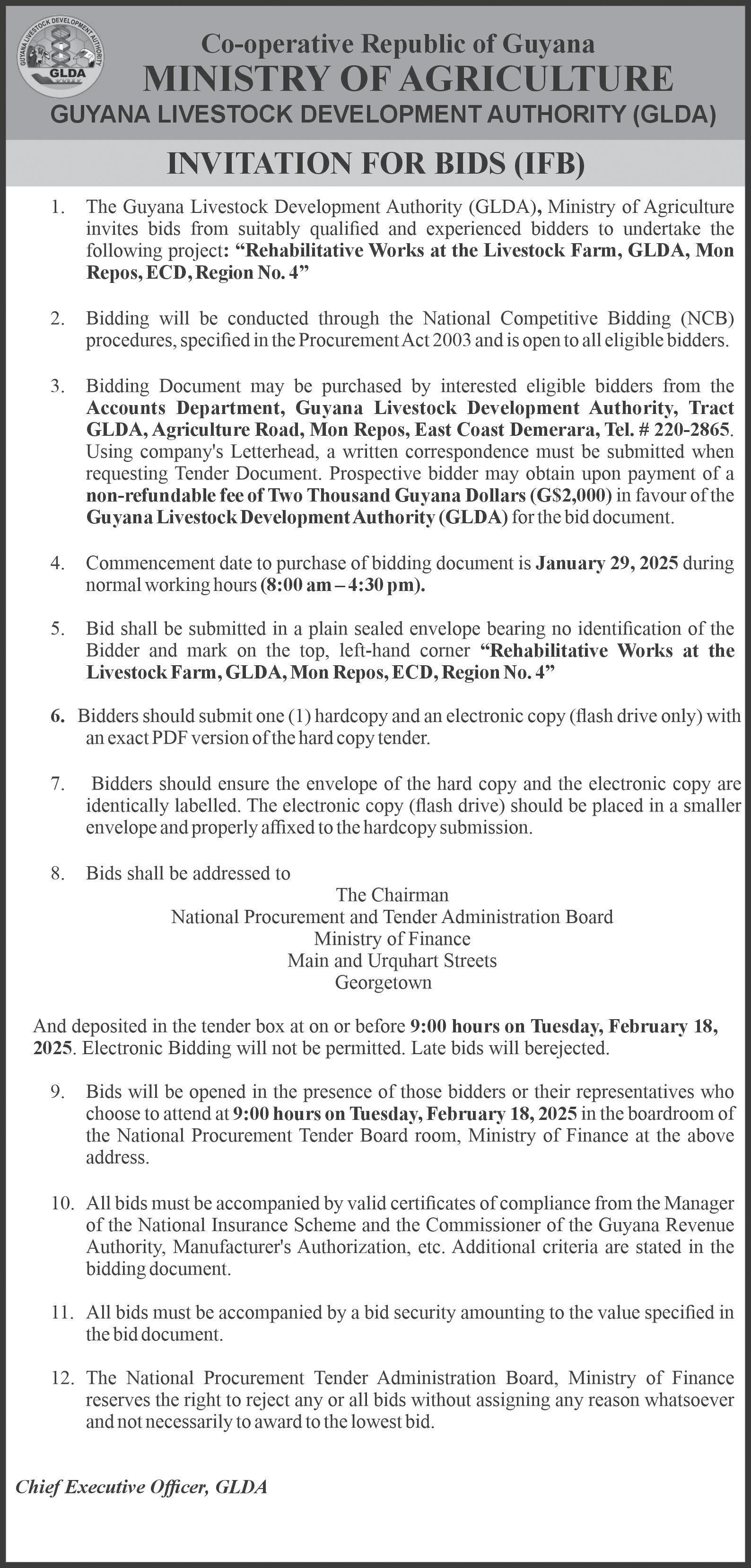
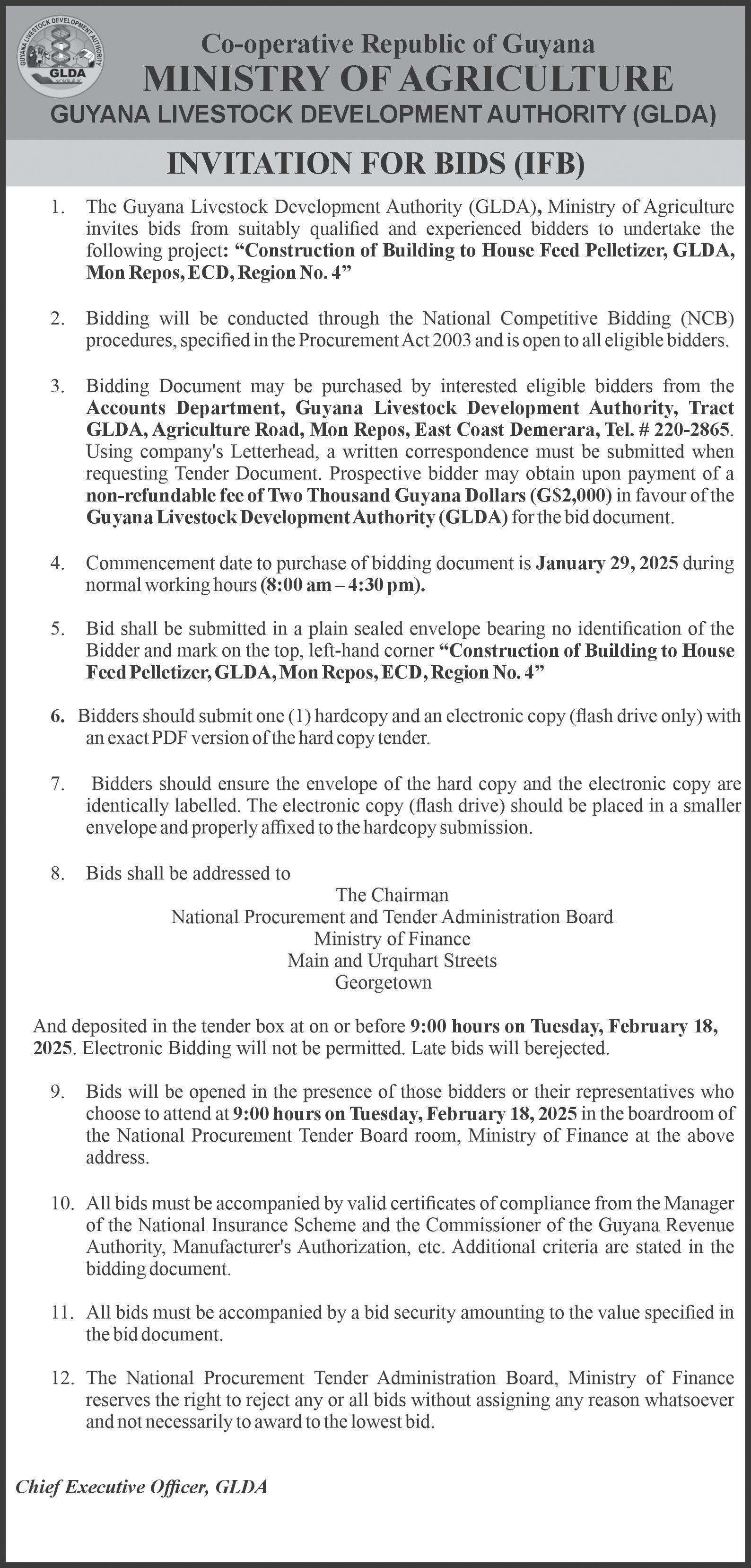













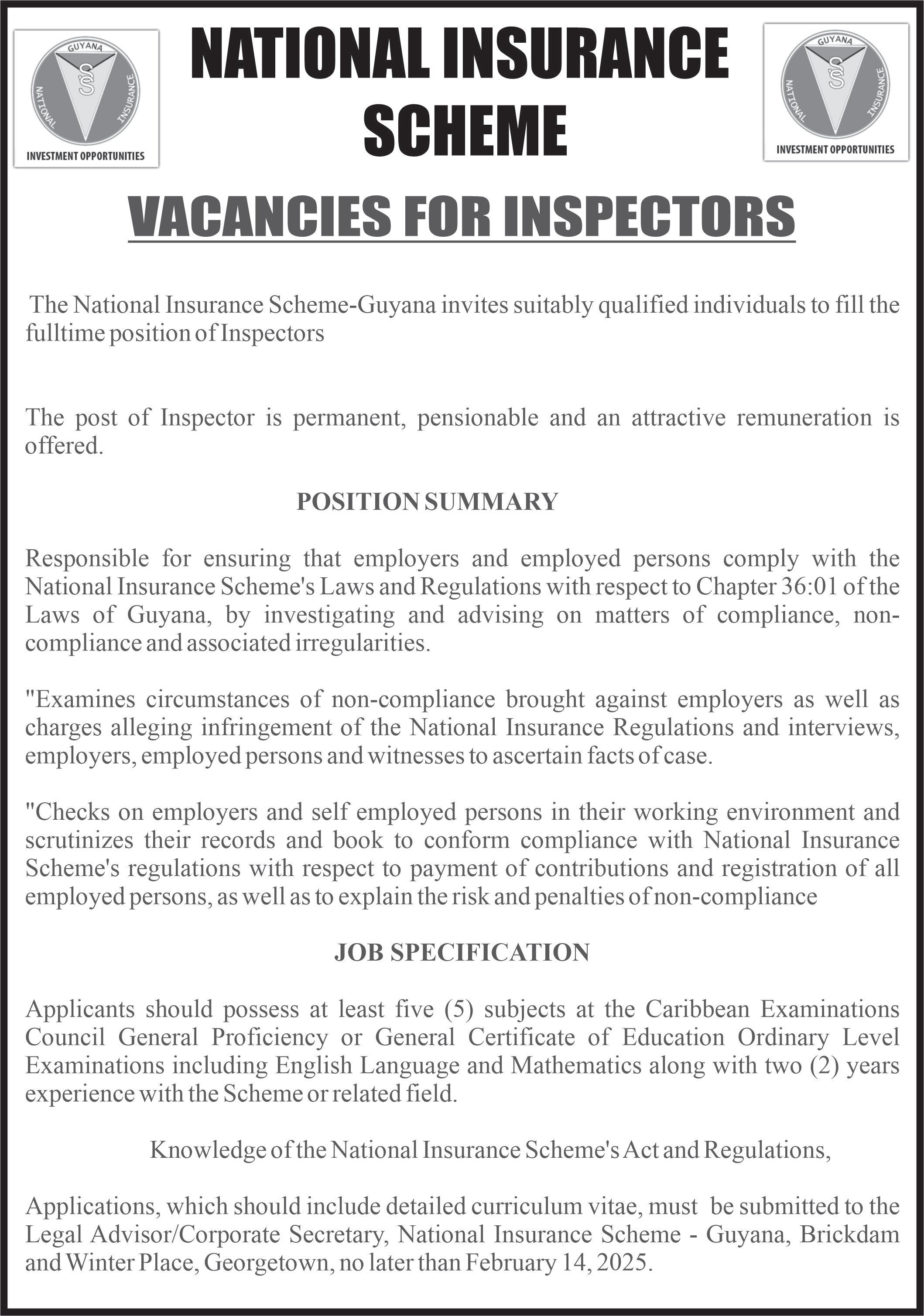












STUDY SUCCESS
Dear Student, Welcome dear reading friend. If you have problems staying up to study try this exercise to relax your head and neck. Let your head drop forward. Try not to pull it down. Are you feeling muscles at back of your neck being stretched by the weight of your head? Yes? That should happen. Now
allow your head to drop backward, then to the left and right. Be relaxed. Your whole future hangs on this season’s performance. Stay up and study! Love you.
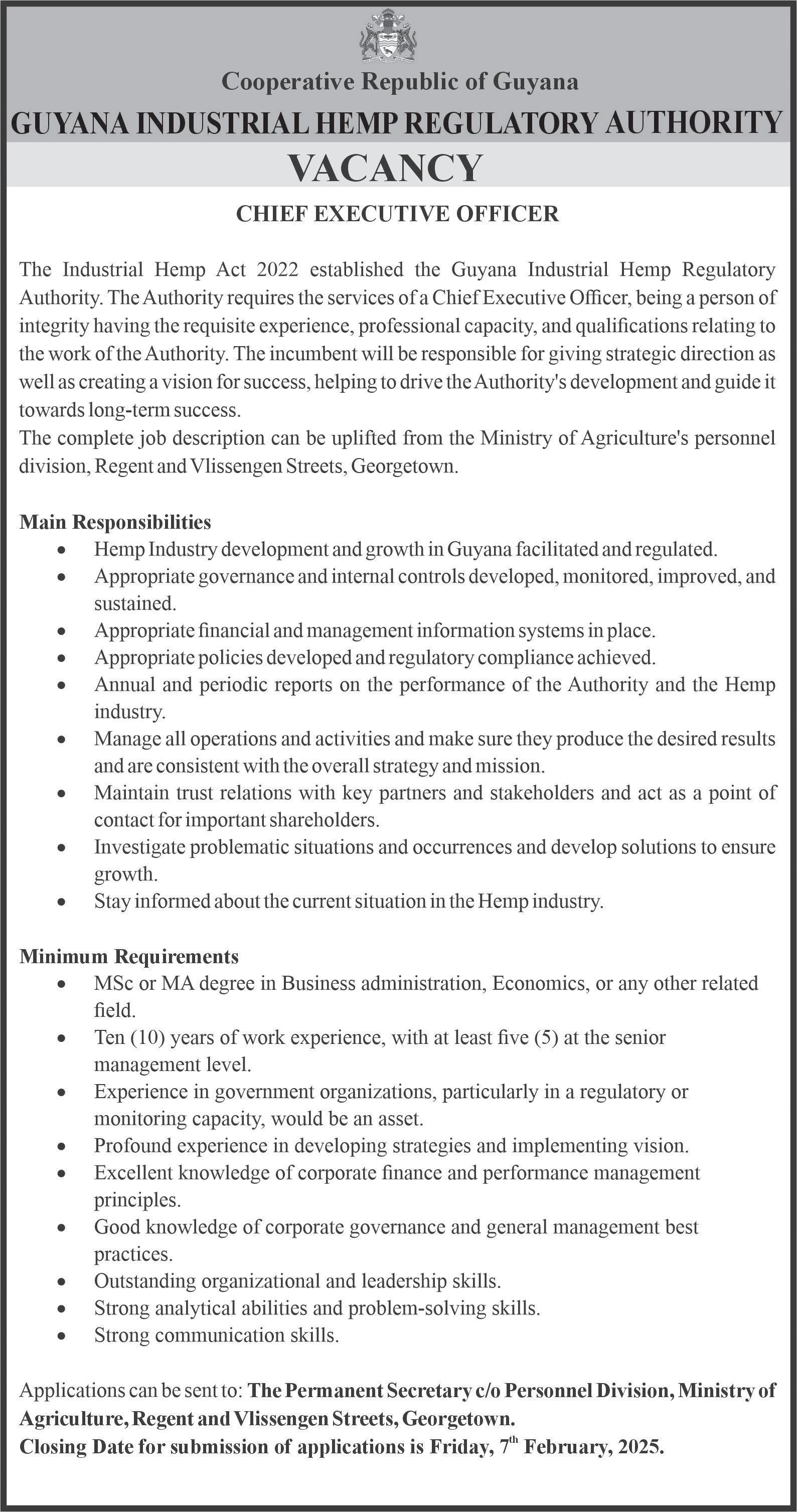
February 2, 2025
THE EXCERPT
Dealing with the character’s mindset
Note: Mindset is defined as the established set of beliefs and attitudes held by someone depicting how he thinks, feels, and behaves. It is a way of processing information and making sense of the world, and then setting expectations based on the input.
1) Look at some terms used to describe mindset: social, growth, fear, lazy, envy, business, dreamer, follower, greed, gratitude, confident, creative, shortterm, angry, productive.
2) See how you can use them to find the single words and phrases to sum up the mindset of each character in the script below.
Text: “But, Alan,” cried I, “that will take us across the very coming of the soldiers!” “I know that fine,” said he; “but if we are driven back on Appin, we are two dead men. So now, David man, be brisk!”
With that he began to run forward on his hands and knees with an incredible quickness, as though it were his natural way of going. All the time, too, he kept winding in and out in the lower parts of the moorland where we were the best concealed. Some of these had been burned over or at least scathed with fire; and there rose in our faces (which were close to the ground) a blinding, choking dust as fine as smoke. The water was long out; and this posture of running on the hands and knees brings an over mastering weakness and weariness, so that the joints ache and wrists faint under your very weight ….
At length in the gloaming of the night, we heard a trumpet sound…. A little after, they had built a fire and camping for the night, about the middle of the waste. At this I besought that we might lie down and sleep.
“There shall be no sleep the night!” said Alan. “From now on, these weary dragons of yours will keep the crown of the moorland, and none will get out of Appin with winged fowls. We got through in the nick of time, and shall we play jeopardy with what we’ve gained? Na, na, when the day comes, it shall find you and me in a fast place in ben Alder.”
Something to Do: 1. Read the passage again and determine which single words and phrases given above sum up each of the two characters’ mid-set. Then, write a clear and concise description of their situation.
2. Suppose Alan and David were conversing as they scampered along; write a short exchange between them on this
‘Tis strange - but true; for truth is always strange; Stranger than fiction. LORD BYRON (1692-1763) Lord Byron’s Don Juan (1823)
crucial flight from the oncoming soldiers.
3. Attempt to bring closure to their situation by writing a few workable paragraphs to complete the situation in the excerpt. THE PASSAGE
Beautiful writing style
Once there was a man who was driving his car at dusk on a spring evening through part of the forest of Savernake. The primroses were just beginning but the trees were still bare, and it was cold: the birds had stopped singing an hour ago.
As he, Mr. Peters, entered a straight, empty stretch of road, he seemed to hear a faint crying, and struggling and thrashing, as if somebody was in trouble far away in the trees. He left his car and climbed the mossy bank beside the road. He then stood a moment, and presently heard a rustling and some strange cries in a voice which was almost human – and yet there was something too harsh about it at one time and too clear and sweet at another. Mr. Peters soon found that it was a swan that had become entangled in the thorns growing on the bank of the canal.
The bird struggled all the more frantically as he approached, looking at him with his yellow eyes, and when he took hold of it to free it, it hissed at him, pecked him, and trashed dangerously with its wings which were powerful enough to break his arm. Nevertheless, he managed to release it from the thorns, and carrying it tightly with one arm, holding the snaky head well away with the other hand (for he did not wish his eyes pecked out), he took it to the verge of the canal and dropped it in.
The swan instantly assumed great dignity and sailed out to the middle of the water, where it put itself to rights with much babbling and preening, smoothing its feathers with little
showers of drops. Mr. Peters waited, to make sure that it was all right and suffered no damage in its struggles. Presently the swan, when it was satisfied with its appearance, floated into the bank once more, and in a moment, instead of the great white bird, there was a little man all in green with a golden crown and long beard, standing by the water. He had fierce glittering eyes and looked by no means friendly.
“Well, Sir,” he said threateningly, “I see you are presumptuous enough to know some of the laws of magic. You think that because you have rescued – by pure good fortune – the King of the Forest from difficulty, you should have some fabulous reward…”
(From Joan Aiken’s “The Third Wish”)
About the Passage: What a wonderful piece of writing! Observe the many writing qualities that came through with great effect: Quick and progressive plot development; Clear thinking and action of characters; Simple narration; Clear and precise description; Excellent use of simple language; Straight forward dialogue; Magnetic lead up to the fairy tale and magic input.
Something to Do: 1a) Tell a friend why you think the writer deliberately created that opening scenery. b) What elements are in the opening? 2. a) Did Mr. Peters turn to the left or right while heading to the scene of the trapped swan? b) What elements of influence or non-influence were there in the encounter between man and swan?
c) What external conflict does Mr. Peters face after he finds the swan? 3. Give what you think would be a fitting end to the story, paying attention to the writer’s influence. (Allow your study partner to offer constructive criticism).

WHAT we commonly call the throat is actually the oropharynx, which is visible at the back of the mouth, situated below the nasopharynx and above the larynx (voice box). The tonsils are spongy tissues at the back of the throat, composed mainly of lymphatic cells. There are three types. The palatine tonsils, usually referred to simply as the "tonsils," are visible between the arches that extend from the uvula (the bell-shaped structure at the centre of the opening) to the floor of the mouth. We can consider the tonsils as soldiers that protect the throat from infections.
Notwithstanding, at some point in our lives, we will all suffer from pharyngitis or a sore throat. A virus mostly causes this condition and is usually easy to treat. However, while this seems normal, the cause and evolution of the disease can vary significantly. Included in respiratory system disorders, the acute or chronic condition may arise from causes such as infections, allergies, tumours, and drug reactions.
A sore throat is usually a prominent symptom of a wide variety of diseases. Luckily, it is rarely the result of rheumatic, scarlet, or relapsing fevers (the latter being spread by a tick). Other conditions that may cause a sore throat include polio, tetanus, tonsillitis, and vitamin B deficiency.
There are three types of tonsils:
1. Palatine Tonsils: These are located between the arches at the back of the throat and are the most commonly affected by tonsillitis.
2. Pharyngeal Tonsils (Adenoids): These are located at the back of the throat. They generally shrink as a child grows but may need to be surgically removed if they become enlarged and inflamed.
3. Lingual Tonsils: These are found on the up-
per surface of each side of the back of the tongue.
Infection of the tonsils, known as tonsillitis, can serve as a source of infection elsewhere in the body. The tonsils form lymphocytes, which are white blood cells that produce antibodies to combat harmful organisms trapped in the mucous membrane lining of the throat. In fact, the lymphocytic tissue surrounding the throat represents the first line of defence against invading pathogens.
A sore throat that does not respond to conventional treatment may be due to gonorrhoea of the oropharynx contracted from oral sex. Another possible cause is diphtheria, which begins gradually with fever, sore throat, and swollen lymph nodes (glands) in the neck.
A thick white membrane may form on the tonsils, obstructing breathing and necessitating the surgical opening of the windpipe. Diphtheria can also affect the heart muscle and nerves, leading to heart failure, paralysis, and sometimes death.
The throat communicates with the middle ear, located behind the eardrums, through a passage called the Eustachian tube. This is why ear pain may sometimes accompany a cold or throat infection. With a sore throat, the typical complaint is a raw, dry, burning sensation and pain when swallowing, especially cold substances such as ice cream. If the infection spreads downwards to the larynx, hoarseness and temporary loss of voice may ensue.
The first line of treatment for a sore throat is to gargle with warm salt water. You can substitute the water with tea mixed with honey. If the symptoms do not subside after three days, consult your healthcare provider (physician or dentist), who may prescribe adequate doses of penicillin, lozenges, aspirin, and rest.
